Vicky Gothard volunteered with us from September 2022-January 2023 as Communications Coordinator. For more information about our volunteering opportunities, visit www.laffcharity.org.uk!
How LAFF has been using tutor perceptions of beneficiary soft skills to better understand its beneficiaries and the factors underpinning their academic success
LAFF has developed a new impact measurement tool to help us better understand how students’ soft skills (communication skills, confidence, responsibility) relate to their academic success and how to measure LAFF’s impact on its beneficiaries’ development of these soft skills. Having a more holistic understanding of our beneficiaries is key to better supporting them to succeed at school and in their personal development.
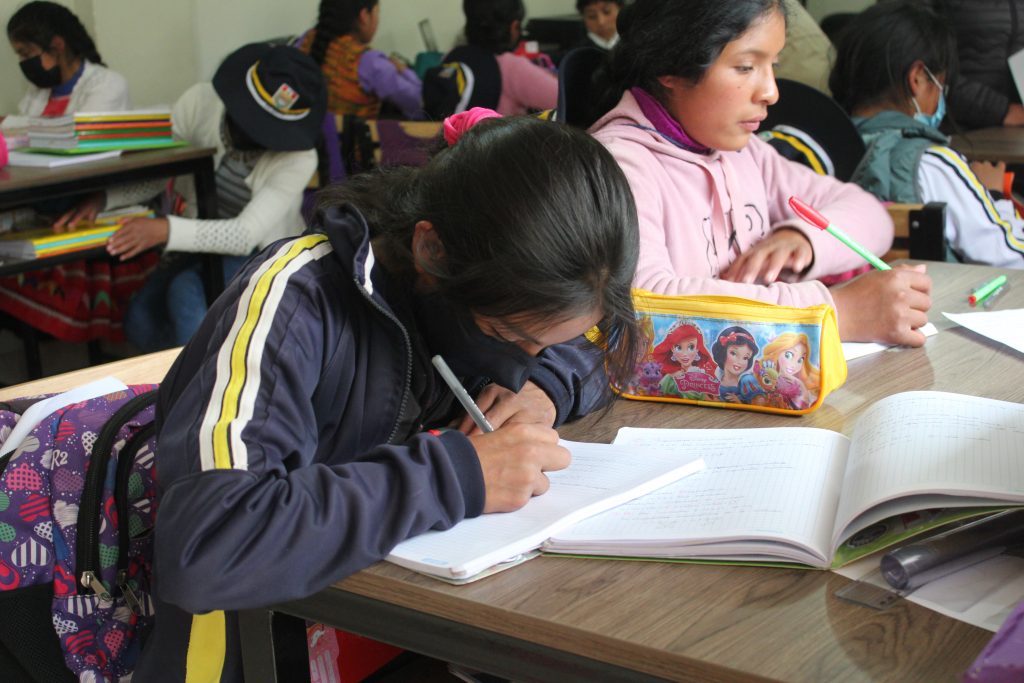
Collecting tutor perceptions data
In March 2021, LAFF asked the tutors from our partner organization Sacred Valley Project* about each student’s confidence and motivation levels. The tutors were presented with the following 4 statements:
- The student is proud of their work
- The student is motivated in the learning process
- The student is excited to move forward with their studies.
- The student feels confident in their knowledge
For each statement, they could either agree, disagree or say they believe the student is making progress in these areas.
The tutor’s perception of soft skills data was then cross-examined with the students’ grades. Over the course of the 2021 academic year (March-December 2021), there was a significant improvement in grades in all subjects (Math, Letters & Sciences, Reasoning and Problem Solving) but also in the student’s attitudes. Overall, these figures began to improve significantly between May and December.
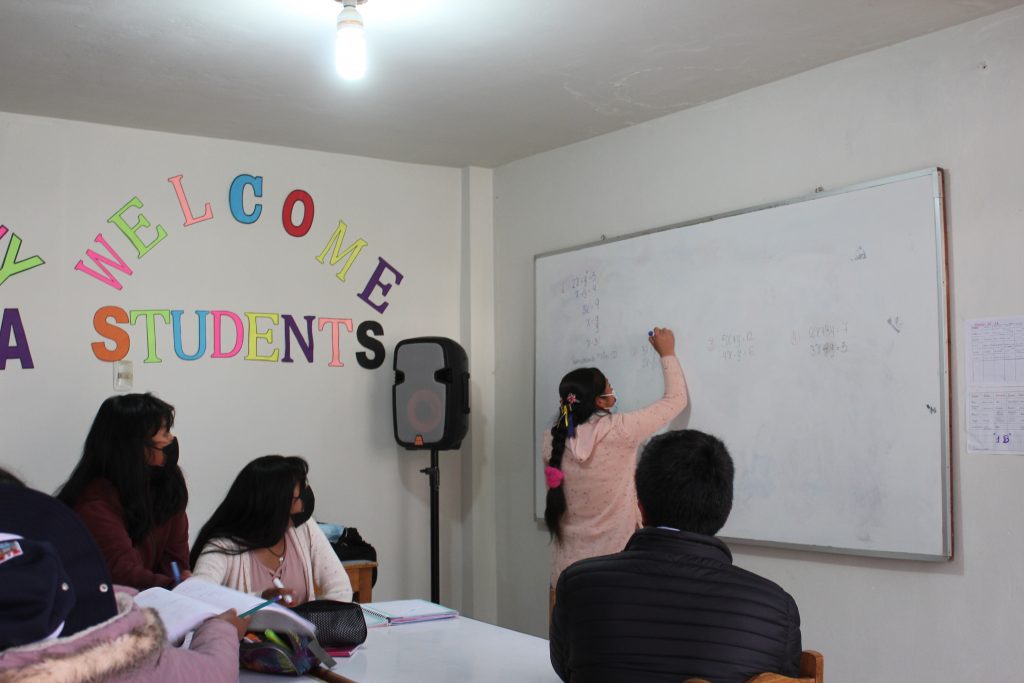
The portraits of 10 students: understanding our beneficiaries holistically
When assessing students’ academic success it is also necessary to consider their personal development and well-being. Therefore, our Monitoring and Evaluation Coordinator Maybe also delved deeper into the profiles of the 5 students who performed the best academically and the 5 who were struggling most. To better contextualize the development of girls’ soft skills, LAFF asked the tutors to provide some information on their family life, social life, health and their outlook on their own future.
On the one hand, the tutors explained that the 5 most academically successful students had confidence in their academic results and in their future. For the most part, their parents were supportive and believed in their daughter’s abilities to receive scholarships and succeed. The girls maintained good social relationships, but tended to prioritize their educational goals.
On the other hand, the tutors painted a very different picture of the personal lives of the 5 girls struggling academically. Though the majority of the girls fared well with group work and communal living, exhibiting solidarity and communication skills, 2 of them struggled to adapt to their new lifestyle at Sacred Valley Project. According to their tutors, these 2 girls suffered from violence at home and stressful family issues that prevented a peaceful life, and hence good grades. Overall, the tutors described these 5 girls, particularly 2 of them, as lacking self-confidence. Shyness prevented some from socializing properly. One of them even found herself often in conflict with the others, who distrusted her, due to her tendency to lie. The tutors attributed these behaviors to traumatic experiences of physical and psychological abuse from a young age.
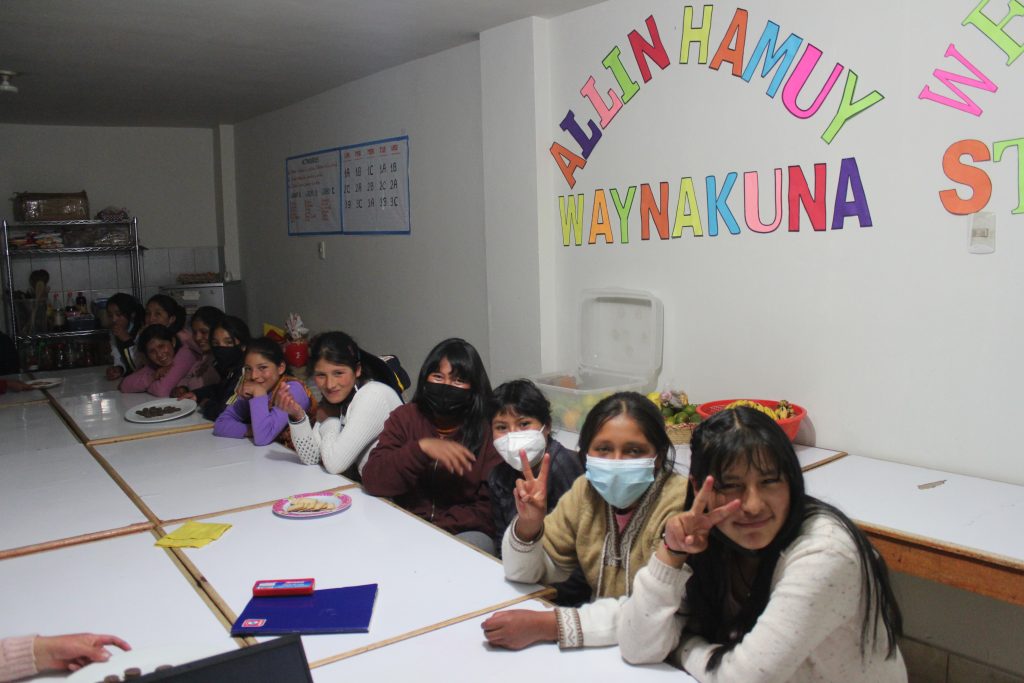
Why soft skills assessment data is so insightful
However, Maybe’s research yielded more surprising and insightful results. For instance, the tutors believed that even though their grades did not reflect it, the 5 girls most struggling academically exhibited an interest in their studies and a will to learn. Moreover, the tutors thought these 5 girls demonstrated confidence in their ability to succeed academically in the future, despite their personal and academic struggles.
Another of Maybe’s surprising finding was that some of the best students scored the lowest when it came to soft skills because of their shyness. The tutors attributed this to their family life. Indeed, one of these girls suffered from a violent father and being dragged into family conflicts, while another suffered from an absent father and an indifferent mother.
The portraits painted of these 10 girls and Maybe’s unexpected findings highlight the necessity for LAFF to holistically support not only the students struggling academically, but also the high-achieving students, who may be struggling on the personal development front. This knowledge will be useful in designing future personal development workshops and programmes for our beneficiaries.
For the moment, the tool is only being used for the Sacred Valley Project, but LAFF hopes to extend it to Mosqoy and Azul Wasi in the near future.
*Only the Ollantaytambo and Calca dorms were taken into account
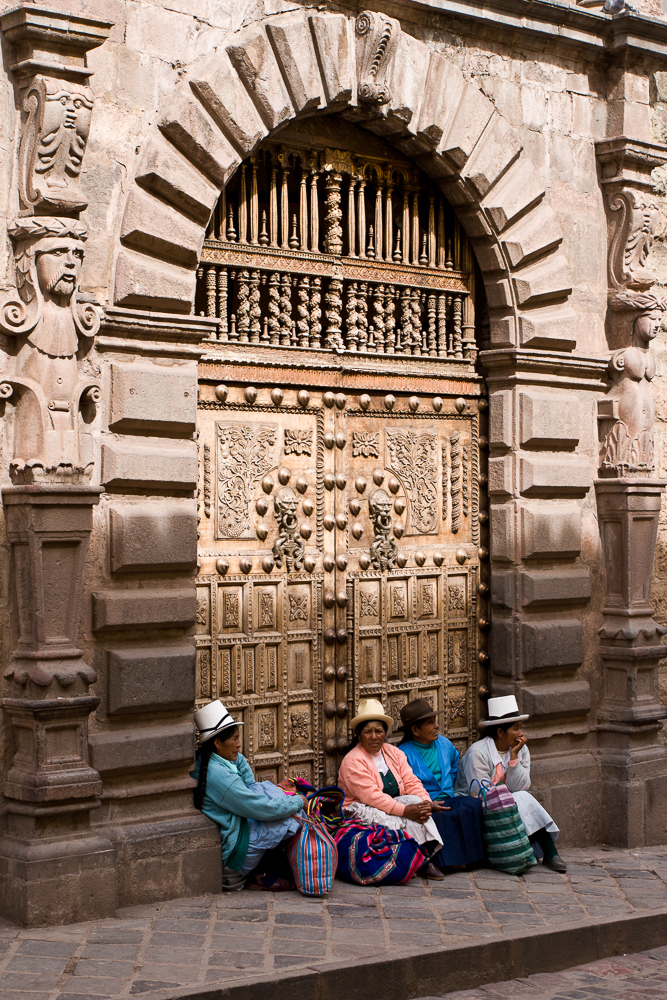

What do you think of when you think of ‘public spaces’? Maybe the park, town squares, or areas of the countryside. A general definition could be areas of land that don’t belong to any one individual but to the whole community, and whose upkeep is organised by the local government.
However, the concept of land ownership has a history of hierarchy, segregation and violence that continues to affect these ‘communal’ areas today. In Peru colonial occupation in 1533 saw indigenous communities dispossessed and forced to work land that was once theirs in exchange for ‘huasipungos’, small plots of land, often in areas that were compromised by risk of flooding or bad soil, where they could grow their own food .
Sadly, this type of entitlement to the land which originally belonged to indigenous people has not ceased. In January 2020, for example, a girl of indigenous descent was denied entry to Machu Picchu because she was wearing a traditional Cusco dress. Authority figures demanded to see a written note from her parents to allow her to enter the site and asked for something proving her right to wear these clothes.*
By making an example of this young girl, the officials showed the legacy of dispossession and segregation of indigenous people. Signs of indigenous culture, in this case, provoked a response from the authorities that questioned her right to this communal space and marginalised her for her culture.
It is not just in more formal public sites that indigenous culture is used as grounds for ostracisation: Peru’s modern cities are rooted in social exclusion. Lima, built in 1535, was designed like a Spanish city. Resources were centralised here for the wealthy colonisers, who lived with their slaves brought from Africa, and the indigenous people lived in barrios on the outskirts of the city. They formed a necessary part of the workforce but, as highlights Peruvian historian Teresa Vergara Ormeño, their work as tradesmen or domestic help left them with no active political power in the city (Vivir y crecer en Lima: niños y jóvenes indígenas en el siglo XVII).
Nowadays, this same exploitative dynamic, whereby indigenous people represent necessary workers but lack political power and representation continues in a new form, ‘los ambulantes’, people who make their living by selling things on the street.
The history of the ambulantes is rooted in pre-Hispanic times, with the market tianguis tradition. This lifestyle presents an alternative form of employment and can, in some senses, be argued as a way of ‘reclaiming’ the public space by diversifying our perception of it.
Not only this, but the presence of the ambulantes on the streets has increased in the past as a response to local and national governments failing to care for the most vulnerable families. The Peruvian historian Jesús Cosamalón has researched that during the 20th Century there was a lack of new marketplaces being built by authorities, thus depriving the citizens of a way of buying food cheaply (La ciudad y los ambulantes (1980-2000)). This, in combination with high inflation at the end of the 20th Century, created a threat to people’s ability to buy food to eat. In this context, los ambulantes became essential for their service.
To think that these people who provided a lifeline for others, are the same people who are most affected by Peru’s quarantine measures is a harrowing blow. Quarantine in Peru has disproportionately affected people from low-income families, often from marginalised social groups, who make their living in the street as it no longer offers the possibility of commerce and exchange.
The disconnect between the elite classes and the rest of Peruvian society has also been shown in the government’s ‘support’ plans to these vulnerable social groups. By offering financial help the government sought to lessen the financial impact of the quarantine period but failed to see that the vast majority of people who make their living informally do not have a bank account, and so needed to go to the bank to collect the money, creating a high risk of transmission amongst the people waiting in line.
The coronavirus pandemic has made us all think more deeply about public spaces: you never miss being able to walk the streets of your town more than when it’s forbidden! But in Peru the divide between before the pandemic and now (I hesitate to describe this as ‘after’) is not as simple as freedom and restriction: the cultural history behind public spaces affects feelings of entitlement and of safety.
When analysing social issues such as access to and inclusion in public spaces, it is important to take an intersectional approach: recognising that there can be a number of prejudices at work in a situation at the same time. Racial prejudice acts in conjunction with gender-based discrimination.
Until very recently, the public and private domains were segregated by gender. The public sphere was for men: a space for decision making, governing and, fundamentally, ownership. The private sphere was where women were confined to, a space for them to be ‘seen not heard’, subservient to their husbands demands and historically unable to own property.
In fact it was only in 1984 in Peru when the Civil Code recognised that men and women could legally both act as heads of the household and in 1993 when the Constitution further enhanced access to land by explicitly stating that men and women could both own and inherit land.
Minga, a Peruvian ONG founded in 1998, recognises the need to recognise both race and gender as factors which affect discrimination. Their mission is to change Peruvian society so that indigenous communities are included without being assimilated, in other words, given a place in society without having to compromise or change their culture and beliefs.
Minga does a lot of work with indigenous girls and women, partly to do with self-esteem and self-perception. The experience of the indigenous girl at Machu Picchu was not unique, and when faced with constant interrogation about yourself and your rights, systemic prejudice can lead to increased vulnerability. At LAFF, we also recognise this and a lot of the mothers at Casa Mantay come from indigenous communities, as the rate of teen pregnancy among girls who speak indigenous languages is 38%, in comparison to a national rate of 13% of girls aged 15-19**.
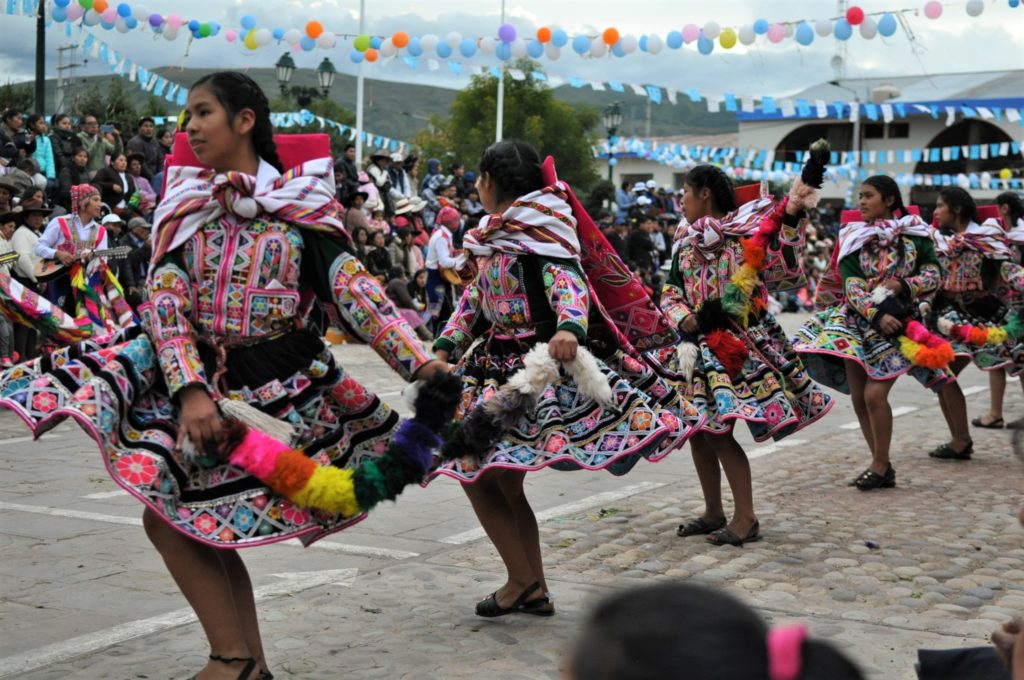
Español
El espacio público en Perú ¿a quién le pertenece realmente?
¿En qué piensas cuando alguien dice ‘espacio público’? Quizás en el parque, las plazas o un espacio al aire libre. Una definición general podría ser: áreas de tierra que pertenecen a ningún particular, sino a toda la comunidad, y cuyo cuidado corresponde al gobierno local.
No obstante, el concepto de propiedad de tierras en el Perú tiene una historia de jerarquía, segregación y violencia que sigue tocando el uso y sentimiento de derecho a las zonas ‘comunes’ hoy en día. Durante la ocupación colonial de Perú en 1533, las comunidades indígenas fueron desposeídas y forzadas a trabajar la tierra que había sido antes suya a cambio de ‘huasipungos’, pequeñas parcelas (a menudo en áreas donde había riesgo de inundación o tierra de mala calidad) donde podían cultivar sus propios alimentos.
Lamentablemente, esta manera de llevarse la tierra y redistribuirla según el prejuicio de la gente en poder (que discriminaba a los indígenas) tiene legados hoy en día. En enero de 2020, por ejemplo, se le fue negada la entrada a Machu Picchu a una niña Cusqueña por llevar puesto su traje tradicional cusqueño. Después de pasar el punto de control, personal del Ministerio de Cultura le exigió un permiso notarial de los padres de la niña para entrar al sitio y “un permiso para estar vestida así” *.
Al reaccionar de esta manera, los oficiales mostraron cómo el legado de la desposesión y segregación de gente indígena permanece en la sociedad peruana. Señales de la cultura indígena, en este caso el traje, provocaron una reacción de interrogación del derecho a un espacio público y de marginalización.
Pero la marginalización por la cultura indígena no solo existe en los sitios públicos formales como Mach Picchu – las ciudades modernas peruanas tienen sus raíces en la exclusión social. Lima, que se construyó en 1535, se diseñó como una ciudad para Españoles. La gente indígena vivía en barrios alrededores de la ciudad ya que inicialmente estaban prohibidos de vivir en la ciudad. Formaban una parte imprescindible de la mano de obra, pero, como señala la historiadora peruana Teresa Vergara Ormeño, su trabajo como artesanos o ayuda doméstica los dejo sin ningún poder político real en la ciudad (Vivir y crecer en Lima: niños y jóvenes indígenas en el siglo XVII).
Hoy en día, este dinámica explotadora, según la cual los indígenas son obreros necesarios, pero carecen de poder y representación política se sigue viendo representada en la figura de ‘los ambulantes’, comerciantes que trabajan en la calle.
La historia de los ambulantes tiene sus raíces en la época prehispánica, con la tradición de mercado popular. Esta manera de vida ofrece una forma alternativa de empleo y se podría decir que, en cierto sentido, ofrece una manera de ‘reclamar’ el espacio público por medio de la diversificación de nuestra percepción de la calle.
Además, la presencia de los ambulantes ha aumentado a lo largo de la historia como una respuesta al fracaso de los gobiernos locales y nacionales para cuidar a los ciudadanos más vulnerables. El historiador Jesús Cosamalón, por ejemplo, ha estudiado cómo durante el siglo XX había una falta de construcción de nuevos mercados libres por las autoridades, privando a la gente de una manera de comparar la comida sin gastar mucho dinero (La ciudad y los ambulantes (1980-2000)). En este contexto, los ambulantes eran imprescindibles.
El pensamiento de que estas personas que han brindado una cuerda salvavidas a los otros, son las mismas personas que padecen más a causa de las medidas de cuarentena del gobierno peruano es angustioso. El confinamiento se toca desproporcionadamente a las familias de bajos ingresos – a menudo de circunstancias desfavorecidas – quienes llegan a fin de mes por el comercio informal, porque ya no existe la posibilidad del comercio e intercambio.
La desconexión entre las clases sociales en la sociedad peruana se ve también en las medidas del gobierno para dar ‘apoyo’ a los grupos vulnerables. La oferta de ayuda financiera intentaba minimizar el impacto del periodo de confinamiento, pero no consideraron los riesgos que trae a la salud el esperar en línea para recibir el dinero, porque la mayoría de estas personas no tienen una cuenta de banco o saben usar las plataformas digitales.
La pandemia nos ha forzado a pensar en el valor de los espacios públicos. ¡nunca se echa de menos tanto la libertad de caminar por las calles como cuando se prohíbe! Pero en el Perú, la división entre la vida antes de la pandemia y ahora no es tan sencillo como la libertad y la restricción: la historia cultural del espacio público afecta nuestros sentimientos de pertenencia y de seguridad.
Cuando se analiza los asuntos sociales como el acceso y inclusión en el espacio público, es importante que adoptemos un enfoque intersectorial, que reconozcamos que hay muchas capas de prejuicio en una situación al mismo tiempo. El prejuicio racial trabajo en conjunto con la discriminación por género.
Hasta muy recientemente, el dominio público y el dominio privado eran segregados por género. El ámbito público era destinado a los hombres – un espacio para tomar decisiones, gobernar y, fundamentalmente, poseer. Las mujeres eran confinadas al ámbito privado, donde debían ‘oír y callar’; ser sumisas a los deseos y exigencias de sus maridos o padres; y donde históricamente no podían poseer nada.
De hecho, fue en 1984 en Perú cuando el Código Civil reconoció que hombres y mujeres podían ser cabeza de familia y en 1993 cuando la Constitución aumentó más el acceso a la tierra a través de indicar que hombres y mujeres podían poseer y heredar tierra.
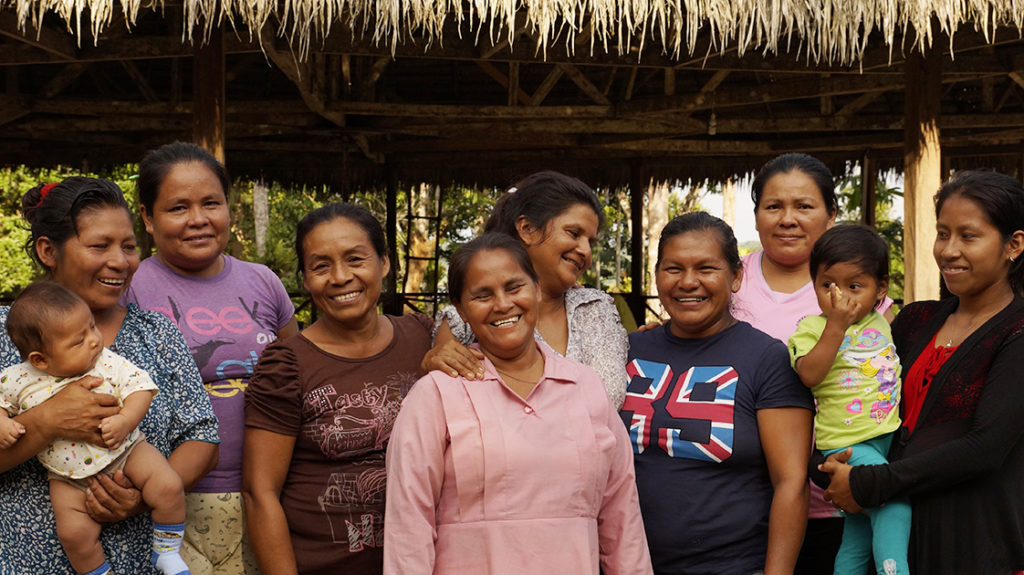
Minga, una ONG peruana que se fundó en 1998, reconoce la necesidad de subrayar la raza y el género los dos como factores que afectan la discriminación. Su misión es cambiar la sociedad peruana para que las personas indígenas puedan tener un espacio pero retener su propia identidad.
Minga trabaja mucho con las chicas y mujeres indígenas, en parte para mejorar su autoestima y autopercepción. La experiencia de la niña indígena en Machu Picchu no es un caso singular, y cuando el prejuicio se hace sistémico puede conducir a un aumento en la vulnerabilidad de esa población. Las organizacioes socias de LAFF deben lidear con este problema, que se expresa de distintas maneras. Por ejemplo, muchas de las madres en Casa Mantay vienen de comunidades indígenas, ya que la tasa del embarazo adolescente entre niñas que hablan idiomas nativos es 38%, 25 puntos por encima de la tasa nacional de 13% (entre chicas de 15-19 años)**.
**https://peru.unfpa.org/sites/default/files/pub-pdf/infografia%20embarazo%20adolescente-25enero.pdf
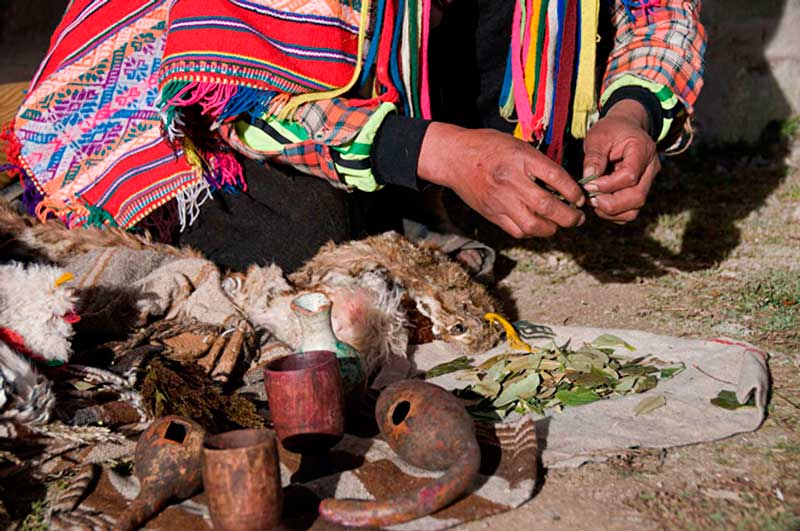
El día de la Pachamama is celebrated on the 1st of August every year by Andean communities and marks the beginning of the Andean calendar. Pachamama comes from the Quechuan words pacha, meaning the Earth, and mama, meaning mother, and so translates to something along the lines of Mother Nature.
Andean communities have a deep connection to the land, which comes in part from their dependency on it for food and water. Knowledge has been passed down through generations of how to get the most from the natural area, but El día de la Pachamama is not about taking but about giving thanks. August is the month for ploughing and sowing seeds and so making an offering is done in the hopes of securing a good harvest in the year to come.

The offering traditionally consists of gathering together coca leaves, food, alcohol, cigarettes and some money; wrapping them in a lliqlla (traditional blanket) and placing them in a hole in the ground. Wood is then placed in the hole and set alight, before covering the hole with earth once it has burnt out.
This year at the offering made at Machu Picchu people asked for an ‘[end to the coronavirus pandemic and a return to normal]’*. However, when thinking about taking care of our planet, should we be asking for a return to ‘normal’ after the pandemic? A return to our social life, seeing friends and family, of course, but there are definitely some areas where we could use this as an opportunity for change.
Biodiversity and cultural diversity go hand in hand. There are 17 countries with more than two thirds of the world’s biological resources, and, according to data from the 1992 UN Conference on the Environment and Development, these countries are in areas traditionally with the most indigenous populations. Peru is one of these countries.
Indigenous culture is often preserved orally, passed down from generation to generation by word of mouth. Because it is not written down, the knowledge imparted in these cultures and ways of life is vulnerable.
The coronavirus pandemic has pushed the world to embrace digital technology as a way of keeping in contact and continuing work without the risk of transmission. However, it’s vital that we remember the voices that we don’t hear on our zoom calls.
Here at LAFF, we have experienced this struggle in our attempts to continue to provide access to education to children living in rural Andean regions. If lessons are given virtually, then we run the risk of furthering divisions in our society as those without technology are marginalised and disadvantaged.
Indigenous communities have been active in their attempts to help slow transmission of the COVID-19 virus by closing rivers and roads. That said, there are deep concerns about the effects of ‘restarting the economy’ when lockdown eases: will the sacrifices that people have made across the country by staying at home be rewarded unjustly with empty words and biological destruction?
Activists from within the communities are raising awareness online with hashtags such as #EmergenciaIndígena but the onus is on lawmakers to create policies that respect their knowledge, rights and the individuals and members of society themselves.
In a post-coronavirus society, we need to focus on collaboration as we rediscover our shared spaces. NGOs, academics, government workers and indigenous communities need to be given equal respect for the different skills they bring. There is no doubt that through approaches like these, we all benefit.
I’d like to finish by spotlighting just one of the many initiatives which lends itself to collaboration like this: the repopulation of Polylepis trees in the Andes by the non-profit Asociación Ecosistemas Andinos (ECOAN). Polylepis is a native tree which is able to store large amounts of water, thus helping to prevent mudslides from oversaturated earth. ECOAN was developed by indigenous conservationists and it has received global recognition for the work that it has done to help protect biodiversity. https://www.ecoanperu.org/index.html
This year, when we think about Pachamama and ‘giving back’ to the land, let’s commit to promoting the status of the people who are protecting it by working it sustainably. If we don’t give them a seat at the table (or an invite to the zoom call) for long term collaboration, we run the risk of exploiting them for their work and their knowledge without creating a mutually beneficial partnership.
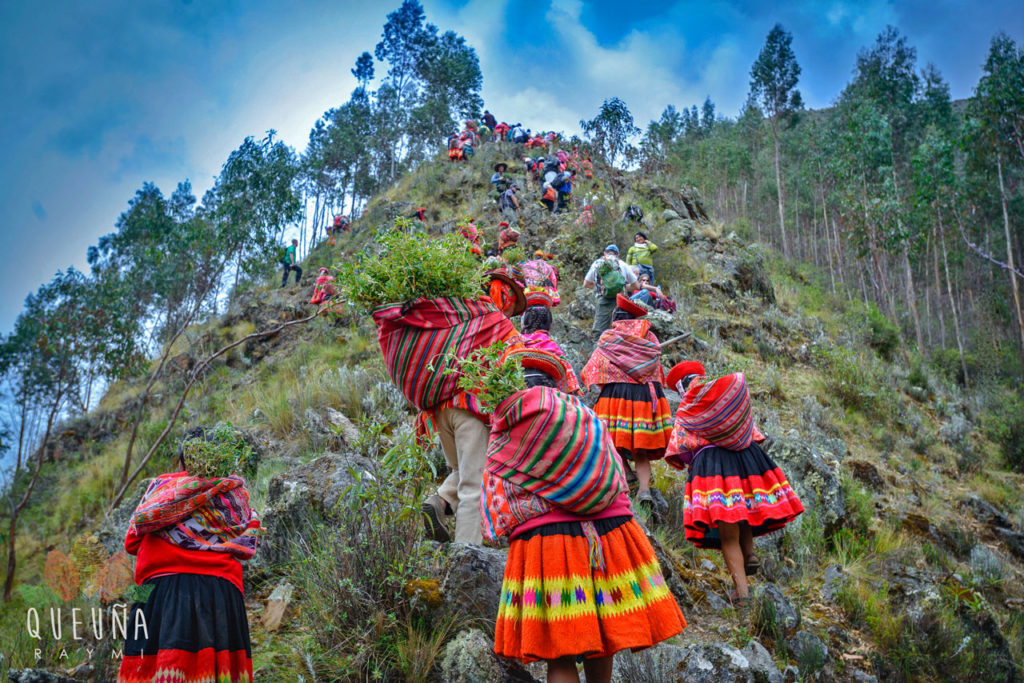
SPANISH
El día de la Pachamama sSSe celebra el 1 agosto de cada año por las comunidades andinas y da comienzo al calendario andino. Pachamama viene de las palabras quechuas pacha, que significa Tierra, y mama, que significa madre. Así Pachamama es el nombre de la diosa de la Madre Tierra.
Las comunidades andinas tienen una relación estrechacon la tierra, en parte, gracias a su dependencia para la provisión de comida y agua. Una conciencia de la tierra y cómo aprovecharla se ha transmitido a través de generaciones, pero El día de la Pachamama pone énfasis en dar gracias en lugar de tomar. Agosto es el mes de arar y sembrar las semillas, por lo que la ofrenda se da para asegurar una buena cosecha el año que viene.
Tradicionalmente para hacer la ofrenda se recogen hojas de coca, comida, alcohol, cigarros y dinero. Las cosas se envuelven en una ‘Lliclla’ (manta de lana) que se mete en un hueco cavado en la tierra. El hueco se llena con leña y se prende fuego antes de cubrirlo de tierra una vez que el fuego se apague.
Este año durante la ofrenda hecha en Machu Picchu la gente pidió ‘el término de la pandemia del coronavirus y el retorno de la normalidad’*. Sin embargo, al pensar sobre el cuidado del planeta, ¿es un ‘retorno de la normalidad’ lo que deberíamos pedir? Un retorno a la vida en común, a ver a familia y amigos, por supuesto. Pero hay, sin duda, ámbitos para que el cambio podría resultar beneficioso.
La biodiversidad y diversidad cultural van de la mano. Hay 17 países que cuentan con más de dos tercios de los recursos biológicos del mundo y, según datos de la Conferencia de Naciones Unidas sobre el Medio Ambiente y Desarrollo en 1992, estos países tradicionalmente cuentan a más poblaciones indígenas. Perú es uno de ellos.
La cultura indigena a menudo se preserva oralmente, transmitida de boca en boca a través de generaciones. Al no ser escrito, el conocimiento compartido de esta manera se vuelve vulnerable.
Debido a la pandemia del coronavirus, estamos pendientes hoy más que nunca de la tecnología para mantenernos en contacto y seguir trabajando sin riesgo de transmisión. No obstante, es imprescindible que nos demos cuenta de que hay algunas voces que no se oyen en las reuniones por zoom.
En LAFF hemos experimentado esta lucha en nuestro intento de continuar brindando acceso a educación a los niños de regiones rurales andinas. Si las clases se realizan en línea, corremos el riesgo de empeorar las divisiones en nuestra sociedad, ya que la gente sin tecnología se margina y se deja más desfavorecida.
Las comunidades indígenas han trabajado para intentar reducir la transmisión del coronavirus cerrando ríos y calles. Sin embargo, hay graves preocupaciones sobre los efectos de ‘reactivar la economía’ cuando la cuarentena se relaje: ¿los sacrificios que las personas han hecho por todo el país serán recompensados con lo que merecen o solo con palabrerío y la destrucción biológica?
Los activistas de las comunidades despiertan conciencia en línea con hashtags tal como #EmergenciaIndígena, pero son los legisladores los que tienen que crear políticas que respeten su conocimiento y sus derechos así como los de individuos y miembros de la sociedad.
En una sociedad pos-coronavirus tenemos que valorar y facilitar la colaboración mientras que redescubrimos nuestros espacios compartidos. ONGs, académicos, trabajadores gubernamentales y comunidades indígenas merecen el respeto igual por las diferentes perspectivas que aportan. No hay duda de que, a través de estos enfoques, todos salen ganando.
Para terminar, quiero traer la atención hacia una de las iniciativas que fomenta la colaboración de esta manera: la Asociación Ecosistemas Andinos (ECOAN) una ONGque recupera los bosques andinos con árboles de Polylepis. El Polylepis es un árbol nativo del Perú que puede almacenar mucha agua, así ayuda a prevenir deslizamiento de tierra. ECOAN se creó por ecologistas indígenas y ha recibido el reconocimiento mundial por su trabajo para proteger la biodiversidad. https://www.ecoanperu.org/index.html
Este año, al pensar sobre la Pachamama y cómo hacer algo por la tierra, comprometámonos a promover el estatus de la gente que la protege. Si no tienen un sitio en la mesa (o una invitación a la llamada de zoom) para las negociaciones de colaboración a largo plazo, hay un grave riesgo de que su trabajo no sea valorado y que no se creen las alianzas que traen beneficio mutuo.
*Andina, 07/07/2020: https://andina.pe/agencia/noticia-con-ofrenda-a-pachamama-machu-picchu-celebra-aniversario-como-maravilla-moderna-804784.aspx: el término de la pandemia del coronavirus y el retorno de la normalidad.
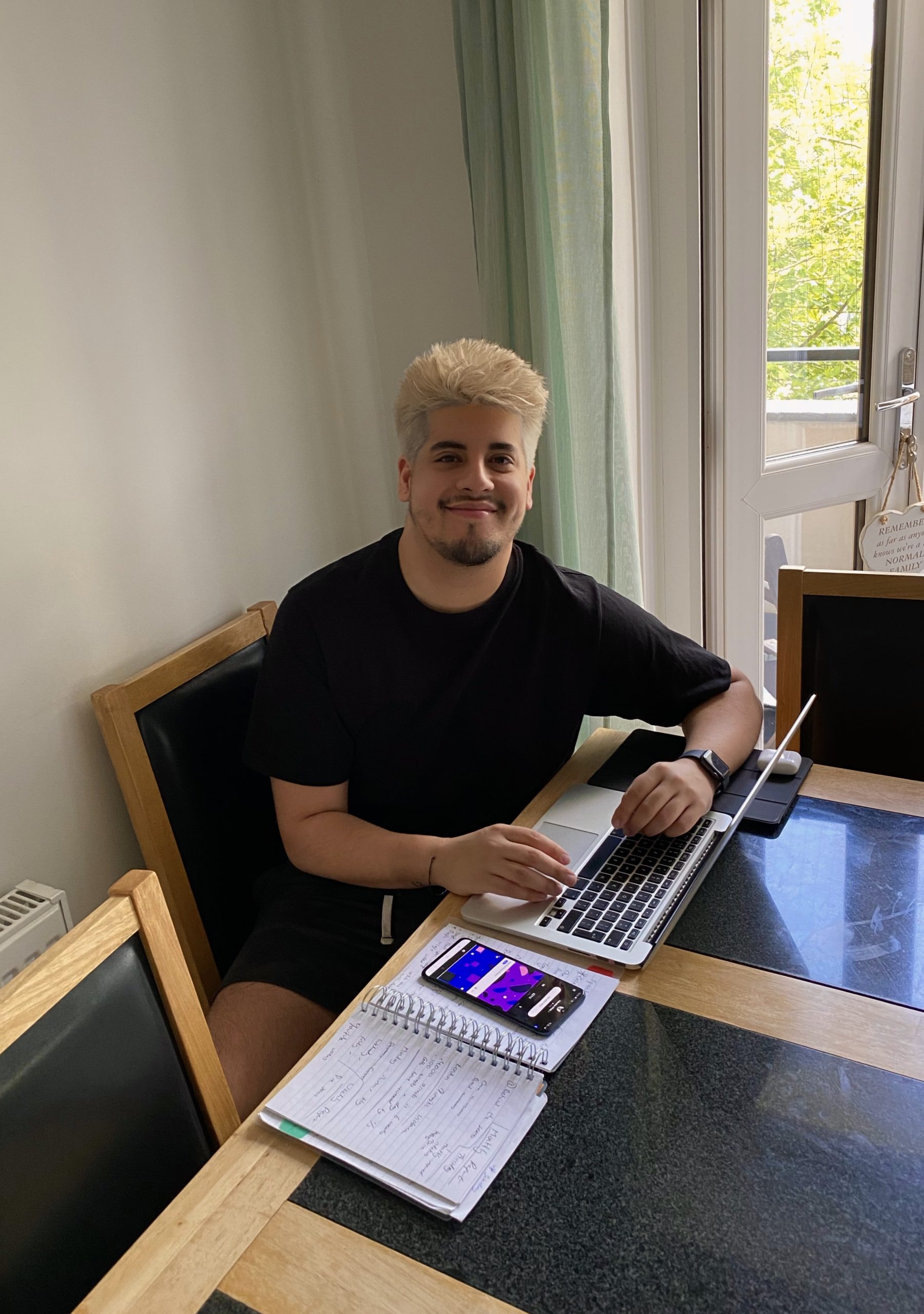
Under lockdown, the life of a remote volunteer for LAFF is challenging, yet equally as exciting. The most difficult part is being six-thousand miles away from the rest of my colleagues – their early morning is my late afternoon. However, with the wonders of good technology (shout-out to Google Meets!), this hurdle is quickly overcome.
I’m currently based in London, having meaning to be in Cuzco earlier this month but of course, with closed borders, it was impossible to leave the country. It’s not so bad though. Working from London has allowed me to carry on working with my other job on a part-time basis while still contributing as much as possible to the daily workings of LAFF – it is imperative that LAFF’s beneficiaries carry on receiving as much support as possible during the pandemic and beyond, and I’m glad that I can play a small part in doing so from across the sea.
My day begins at 10:00AM – quite a late time to wake up, but hey! What better time to catch up on some beauty sleep. I have some breakfast, and spend the first hour checking up on the news and social media before getting ready for the day.
As soon as I’m sat by the table (along with my parents who are also working from home), I log onto my computer and check what tasks I have for the day, or finish tasks I didn’t get to finish from the day before. I have an app called ‘Focus’ that forces me to, well, focus on work for twenty-minute bursts before taking a 5-10minute break. This lets me work efficiently without letting me procrastinate.
I usually sign into my other job at around 11AM. I work for a phone and electronics retail store and since our stores are currently closed, I have to work using my work-phone to advise and sell our products virtually to customers. It’s not very demanding since I can easily multitask between my phone and computer.
I work up until 4PM which is when the LAFF team has its daily meetings via Google Meets. These meetings allow us to talk about our day, chat about how we’re feeling, and what we’re going to be working on for the rest of the day. It’s a good chance for us to update each other on what’s happening.
After our meeting, I usually carry on working up until dinner-time, which is when I begin to wind down for the day and spend some time with the family. I create a To-Do List for the next day and leave it next to my laptop, ready to get going again in the morning!
La vida de un voluntario (trabajando de forma remota) – Sebastian
Bajo encierro, la vida de un voluntario remoto para LAFF es desafiante, pero igualmente emocionante. La parte más difícil es estar a seis mil millas de distancia del resto de mis colegas: su madrugada es el final de la tarde. Sin embargo, con las maravillas de la buena tecnología (¡gracias a Google Meets!), Este obstáculo se supera rápidamente.
Actualmente estoy en Londres, lo que significaba estar en Cuzco a principios de este mes, pero, por supuesto, con las fronteras cerradas, era imposible abandonar el país. Sin embargo, no es tan malo. Trabajar desde Londres me ha permitido seguir trabajando con mi otro trabajo a tiempo parcial mientras sigo contribuyendo lo más posible al trabajo diario de LAFF; es imperativo que los beneficiarios de LAFF sigan recibiendo el mayor apoyo posible durante el pandemia y más allá, y me alegro de poder jugar un pequeño papel desde el otro lado del mar.
Mi día comienza a las 10:00 a.m., es un momento bastante tarde para despertar, ¡pero oye! Qué mejor momento para ponerse al día con un sueño reparador. Desayuno y paso la primera hora revisando las noticias y las redes sociales antes de prepararme para el día.
Tan pronto como me siento junto a la mesa (junto con mis padres que también trabajan desde casa), inicio sesión en mi computadora y verifico qué tareas tengo para el día, o termino tareas que no pude terminar desde el un día antes. Tengo una aplicación llamada “Focus” que me obliga, bueno, a concentrarme en el trabajo durante ráfagas de veinte minutos antes de tomar un descanso de 5-10 minutos. Esto me permite trabajar de manera eficiente sin dejarme postergar.
Por lo general, inicio sesión en mi otro trabajo alrededor de las 11 a.m. Trabajo para una tienda minorista de teléfonos y productos electrónicos y como nuestras tiendas están actualmente cerradas, tengo que trabajar usando mi teléfono de trabajo para asesorar y vender nuestros productos prácticamente a los clientes. No es muy exigente ya que puedo realizar múltiples tareas fácilmente entre mi teléfono y la computadora.
Trabajo hasta las 4 p.m., que es cuando el equipo LAFF tiene sus reuniones diarias a través de Google Meets. Estas reuniones nos permiten hablar sobre nuestro día, conversar sobre cómo nos sentimos y en qué vamos a trabajar durante el resto del día. Es una buena oportunidad para actualizarnos mutuamente sobre lo que está sucediendo.
Después de nuestra reunión, por lo general sigo trabajando hasta la hora de la cena, que es cuando empiezo a relajarme durante el día y pasar un tiempo con la familia. Creo una lista de tareas para el día siguiente y la dejo junto a mi computadora portátil, ¡lista para comenzar de nuevo por la mañana!
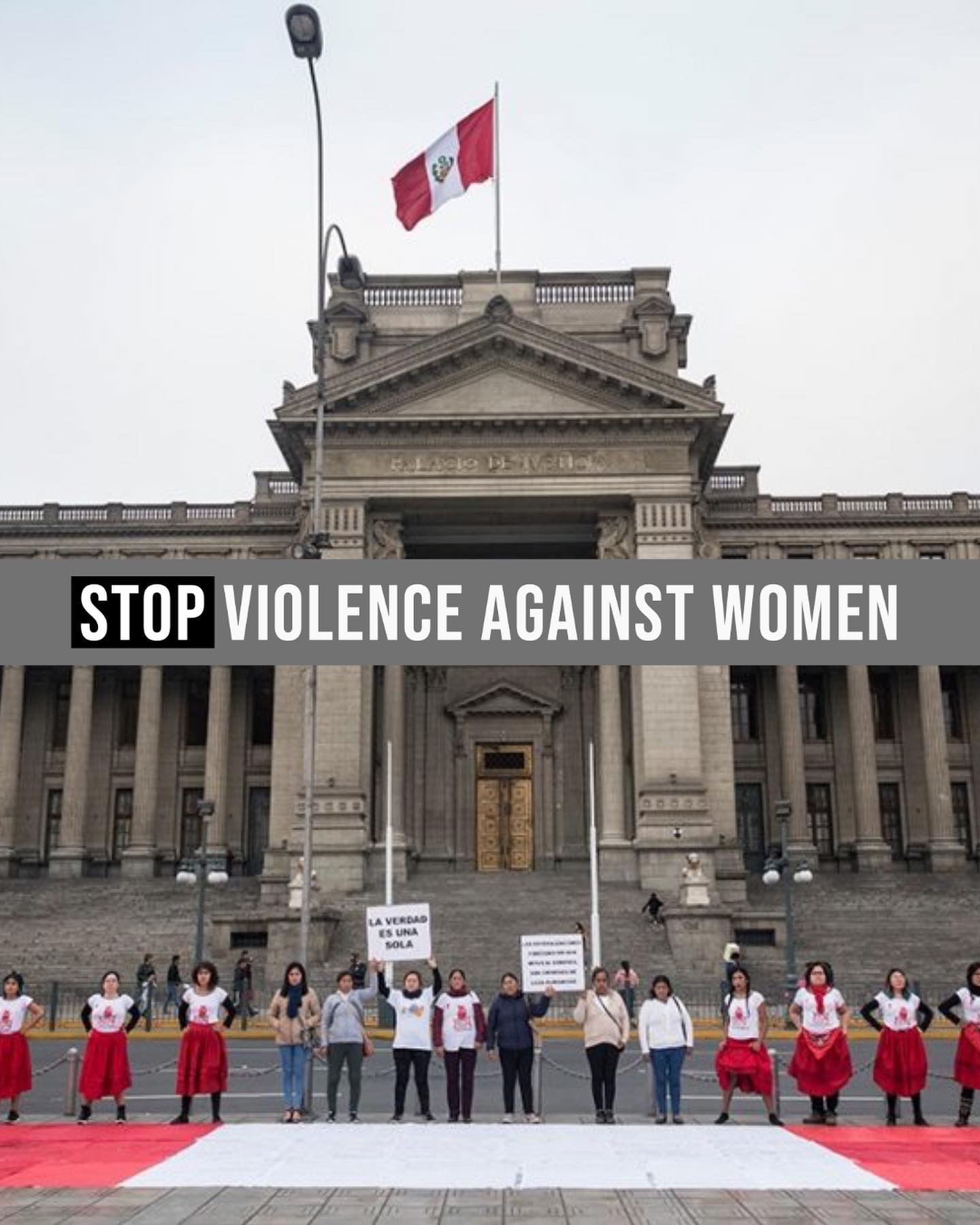
As different parts of the world go into varying degrees of lockdowns and curfews in the face of the ongoing COVID-19 outbreak, an ominous trend seems to be on the rise: that of a rise in the reported cases of domestic violence. Research has shown time and again that in emergencies and prolonged periods of confinement there is a significant rise in new and pre-existing abusive behaviour and violence. A United Nations Population Fund report released last week warned that domestic violence cases around the world could grow by at least 31 million if quarantine measures continue to the end of the year without specific protections for vulnerable populations. The report estimates at least a 20 percent increase in cases in the next three months.
That confinement due to COVID-19 was leading to an increase in incidents of domestic violence was first confirmed in China where domestic violence reports tripled during the lockdown. A similar pattern has emerged around the world and especially in Latin America where the number of calls made by victims of domestic violence have increased substantially. The situation is undoubtedly no different in Peru. Last week the Ministry of Women and Vulnerable Populations (MIMP) reported an increase in gender-based violence cases since the start of the coronavirus quarantine. At least seven femicides have been confirmed in the last month, and activists reported at least 80 cases of sexual violence. Approximately 1,500 complaints have been fielded, with 60 percent of domestic violence cases occurring in densely populated cities, according to MIMP head, Gloria Montenegro.
Violence against women and girls has been a social, cultural and economic problem in Peru for decades now. As stated by the OECD, women in Peru are subject to abuse with almost half suffering from violence at least once in their lives and according to the Criminal Observatory of the Public Ministry, 60% of femicides in Peru occur at home. Such statistics go to show how the risk of violence against women and girls increase exponentially in their homes. In the current scenario then, the conditions created by the pandemic have created the perfect opportunity for domestic abuse to flourish.
The lockdown pertaining to the prevention of the COVID-19 spread in Peru has destroyed support systems and has made it very difficult for victims to get help or escape their perpetrator. One immediate effect of being confined within the same house as their perpetrator is not only are women far more vulnerable to domestic abuse but are also less likely to be able to make an emergency telephone call for fear of being overheard by the aggressor. Then there is also the possibility that in times like these, support groups and police would not be of much help to victims as the health crisis will likely take priority over instances of domestic violence, mainly due to the fact that the law enforcement agencies are severely overburdened at the moment.
In response to the mounting cases of domestic violence and increased public outrage, the Peruvian Government has recently announced measures to prevent and protect victims of domestic violence during the State of Emergency. These measures include an increased emphasis on how women reporting instances of domestic violence must be attended to by the local police immediately. The government announced new protective measures to combat gender-based violence, including a revision to criminal legislation meant to streamline the prosecution of offenders. And while it is commendable that the Government has responded swiftly in response to the rise in violence against women, it must be noted that the Government has not implemented any measures to include figures of domestic violence suffered by indigenous women, thereby putting them at greater risk of exploitation.
As suggested by many social workers all over the world, the Peruvian Government can take a few extra measures such as classifying domestic violence services as essential in order to combat the issue. As has been noted by numerous social activists, indigenous women are more vulnerable in such situations due to the lack of access to mobile phones. This can be tackled by promoting simple ways to contact and alert the police of the need of urgent help, such as text messages or online chats, and the use of established code words with “essential workers”.
Being confined to one’s home because of coronavirus is difficult for everyone, but it has the potential to become an ordeal for existing and potential victims of domestic violence. A crucial safety net therefore must be offered to some of the most vulnerable to abuse in society to overcome the immediate as well as the long-term impact of this health crisis.
Aumento de la violencia doméstica en Perú durante el cierre de COVID-19
A medida que diferentes partes del mundo entran en diversos grados de bloqueos y toques de queda ante el brote de COVID-19, una tendencia ominosa parece estar en aumento: la de un aumento en los casos reportados de violencia doméstica. La investigación ha demostrado una y otra vez que en emergencias y períodos prolongados de reclusión hay un aumento significativo en el comportamiento abusivo y la violencia nuevos y preexistentes. Un informe del Fondo de Población de las Naciones Unidas publicado la semana pasada advirtió que los casos de violencia doméstica en todo el mundo podrían aumentar en al menos 31 millones si las medidas de cuarentena continúan hasta el final del año sin protecciones específicas para las poblaciones vulnerables. El informe estima al menos un aumento del 20 por ciento en los casos en los próximos tres meses.
Ese encierro debido a COVID-19 estaba llevando a un aumento en los incidentes de violencia doméstica que se confirmó por primera vez en China, donde los informes de violencia doméstica se triplicaron durante el cierre. Un patrón similar ha surgido en todo el mundo y especialmente en América Latina, donde el número de llamadas hechas por víctimas de violencia doméstica ha aumentado sustancialmente. La situación, sin duda, no es diferente en Perú. La semana pasada, el Ministerio de Mujeres y Poblaciones Vulnerables (MIMP) informó un aumento en los casos de violencia de género desde el comienzo de la cuarentena de coronavirus. Al menos siete feminicidios han sido confirmados en el último mes, y los activistas reportaron al menos 80 casos de violencia sexual. Se han recibido aproximadamente 1,500 denuncias, con un 60 por ciento de los casos de violencia doméstica ocurriendo en ciudades densamente pobladas, según la directora del MIMP, Gloria Montenegro.
La violencia contra las mujeres y las niñas ha sido un problema social, cultural y económico en Perú desde hace décadas. Según lo declarado por la OCDE, las mujeres en Perú están sujetas a abusos y casi la mitad sufre violencia al menos una vez en sus vidas y, según el Observatorio Penal del Ministerio Público, el 60% de los feminicidios en Perú ocurren en el hogar. Estas estadísticas muestran cómo el riesgo de violencia contra las mujeres y las niñas aumenta exponencialmente en sus hogares. En el escenario actual, entonces, las condiciones creadas por la pandemia han creado la oportunidad perfecta para que florezca el abuso doméstico.
El bloqueo relacionado con la prevención de la propagación de COVID-19 en Perú ha destruido los sistemas de apoyo y ha hecho que sea muy difícil para las víctimas obtener ayuda o escapar de su autor. Un efecto inmediato de estar confinada dentro de la misma casa que su perpetrador no solo es que las mujeres son mucho más vulnerables al abuso doméstico, sino que también tienen menos probabilidades de poder hacer una llamada telefónica de emergencia por temor a que el agresor las escuche. Luego también existe la posibilidad de que en estos momentos, los grupos de apoyo y la policía no sean de mucha ayuda para las víctimas, ya que la crisis de salud probablemente tendrá prioridad sobre los casos de violencia doméstica, principalmente debido al hecho de que las agencias de aplicación de la ley son severamente sobrecargado en este momento.
En respuesta a los crecientes casos de violencia doméstica y la creciente indignación pública, el gobierno peruano ha anunciado recientemente medidas para prevenir y proteger a las víctimas de la violencia doméstica durante el estado de emergencia. Estas medidas incluyen un mayor énfasis en cómo las mujeres que denuncian casos de violencia doméstica deben ser atendidas por la policía local de inmediato. El gobierno anunció nuevas medidas de protección para combatir la violencia de género, incluida una revisión de la legislación penal destinada a racionalizar el enjuiciamiento de los delincuentes. Y aunque es encomiable que el Gobierno haya respondido rápidamente en respuesta al aumento de la violencia contra las mujeres, debe señalarse que el Gobierno no ha implementado ninguna medida para incluir cifras de violencia doméstica sufrida por las mujeres indígenas, lo que las pone en mayor riesgo de explotación.
Según lo sugerido por muchos trabajadores sociales en todo el mundo, el Gobierno peruano puede tomar algunas medidas adicionales, como clasificar los servicios de violencia doméstica como esenciales para combatir el problema. Como han señalado numerosos activistas sociales, las mujeres indígenas son más vulnerables en tales situaciones debido a la falta de acceso a teléfonos móviles. Esto puede abordarse promoviendo formas simples de contactar y alertar a la policía de la necesidad de ayuda urgente, como mensajes de texto o chats en línea, y el uso de palabras clave establecidas con “trabajadores esenciales”.
Estar confinado en la casa de uno debido al coronavirus es difícil para todos, pero tiene el potencial de convertirse en un calvario para las víctimas existentes y potenciales de violencia doméstica. Por lo tanto, se debe ofrecer una red de seguridad crucial a algunos de los más vulnerables al abuso en la sociedad para superar el impacto inmediato y a largo plazo de esta crisis de salud.
Sources
[1] Tamara Abueish, Coronavirus: A Jordanian woman pleads for help as domestic abuse cases rise globally, Al Arabiya English, April 2020, https://english.alarabiya.net/en/features/2020/04/06/Coronavirus-Jordanian-woman-s-pleas-for-help-highlight-global-rise-of-domestic-abuse.html
[2] La otra pandemia: violencia en el hogar en tiempos de cuarentena, UNDP Peru, April 2020, https://www.pe.undp.org/content/peru/es/home/presscenter/articles/2020/la-otra-pandemia–violencia-en-el-hogar-en-tiempos-de-cuarentena.html
[3] Fahmida Hasan, Addressing the rise in domestic violence during lockdown, The Daily Star, May 2020, https://www.thedailystar.net/opinion/news/addressing-the-rise-domestic-violence-during-lockdown-1894618
[4] Women suffer as lockdown worsens Latin America’s ‘domestic hell’, Buenos Aires Times, April 2020, https://www.batimes.com.ar/news/culture/domestic-violence-latin-americas-other-quarantine-emergency.phtml
[5] Tanya Wadhwa, Spike in Gender-based Violence During Quarantine in Latin America and the Caribbean, Latino USA, April 2020, https://www.latinousa.org/2020/04/30/femicidesperu/
[6] Perú reporta siete feminicidios durante confinamiento, America Latina, April 2020, https://www.telesurtv.net/news/peru-reporta-siete-feminicidios-durante-cuarentena–20200429-0008.html
[7] Ostry, J. D., A. Berg, and C. Tsangarides, Redistribution, Inequality, and Growth, IMF Staff Discussion Note, International Monetary Fund, 2014
*Image taken from DEMUS Estudio para la Defensa de los Derechos de la Mujer
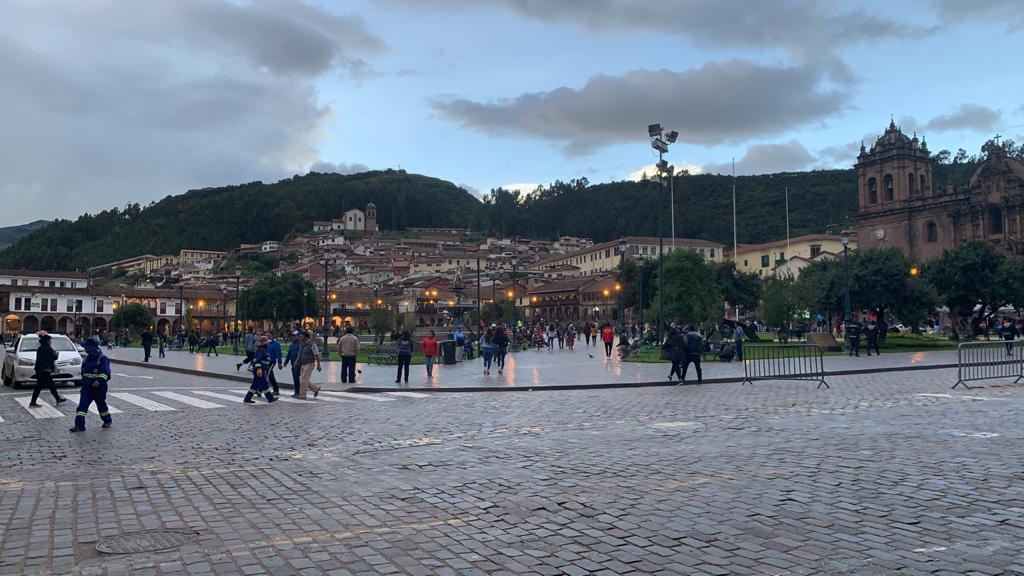
The rapid spread of COVID-19 has had a severe impact on economies around the world as states continue to impose lockdowns on their populations. Since 2000, tourism has made up the third-largest industry in Peru and employs up to 403,500 people across the country. The tourism sector represents 3 percent of Peru’s GDP and depends upon the annual flow of roughly 4.5 million tourists to generate that number. And as a result, it is one of the most severely affected sectors in the country because of the current state of emergency and closure of all international and domestic borders in Peru. This measure has meant that non-essential private and public businesses will remain closed until further announcements by the Peruvian Government. According to Peru Chambers, the three regions most affected by the complete halt of the arrival of international tourists into Peru will be Apurimac, Puno, and Cusco. Because these regions rely heavily on tourism, they are expected to incur heavy losses in the coming months and perhaps for the foreseeable future.
Closure of sites like Machu Picchu, which alone receives 1.7 million tourists annually from around the world has caused widespread uncertainty amongst communities that depend heavily upon tourism. The Cusco district’s economic activity, for example, depends up to 85 percent on income generated by international and domestic tourism. And while the Government has begun to take a series of economic measures to provide relief to vulnerable families and small businesses, it is unlikely that the measures will be able to mitigate the harm done by measures taken to prevent the spread of COVID-19. This has created an atmosphere of anxiety in these regions as most people have no other source of income. Most travel agencies have reported international and domestic tourists cancelling their travel plans in Peru until at least September 2020. If this trend were to continue it would mean no tourist flow for the next several months, not just in the regions frequently visited by tourists, but throughout the country. This has also had a severe impact on LAFF’s partners and beneficiaries. Taller Mantay and Mosqoy make a substantial amount of their income from selling products to tourists in Cusco and around the world. With the complete halt of postal system operations around the world, LAFF’s partners have been unable to sell their products since the beginning of the national emergency in Peru and as a result, have been struggling financially.
It is estimated that 72 percent of Peru’s population works in the informal sector and a considerable amount of people work in businesses related to tourism. These businesses range from street food vendors to small restaurant owners and workers to tour guides. And in the current scenario this percentage of the population is particularly vulnerable as most workers do not have access to either benefits or health insurance.
In light of these events the Minister of Economy and Finance, Maria Antonieta Alva has indicated that the Peruvian Government will allocate resources equivalent to 12 percent of its national production in order to combat the economic damage caused by COVID-19. “As a Government, we are going to make all the necessary efforts. For now, we have projected 12 percent of the GDP. If more (resources) are required, then more will be given. The important thing for us is to protect employment and obviously get out of the coronavirus (problem) as soon as possible in order to start the economic reactivation process,” Alva stipulated. She indicated that the Government’s economic plan – aimed at tackling the COVID-19 pandemic – has two stages: first of containment and the second of economic reactivation. “For the containment stage, we project that we will spend S/30 billion (about US$8.764 billion) during the first phase. There is a second phase of containment, which has already been announced by the Central Reserve Bank Governor (Julio Velarde), a guarantee scheme for loans to companies worth S/30 billion and another stage of reactivation (also totaling S/30 billion),” she explained.
And although the final effects of the pandemic will only be evident in the following months, the measures proposed by the Government might help mitigate the disastrous effect COVID-19 has had on the tourism sector and the Peruvian economy.
Impacto de COVID-19 en el turismo en Perú
La rápida propagación de COVID-19 ha tenido un grave impacto en las economías de todo el mundo a medida que los estados continúan imponiendo bloqueos a sus poblaciones. Desde 2000, el turismo ha constituido la tercera industria más grande en Perú y emplea a hasta 403,500 personas en todo el país. El sector turístico representa el 3 por ciento del PIB del Perú y depende del flujo anual de aproximadamente 4,5 millones de turistas para generar ese número. Y como resultado, es uno de los sectores más severamente afectados en el país debido al estado actual de emergencia y cierre de todas las fronteras internacionales y nacionales en Perú. Esta medida ha significado que las empresas privadas y públicas no esenciales permanecerán cerradas hasta nuevos anuncios por parte del gobierno peruano. Según las Cámaras del Perú, las tres regiones más afectadas por el alto total de la llegada de turistas internacionales al Perú serán Apurímac, Puno y Cusco. Debido a que estas regiones dependen en gran medida del turismo, se espera que incurran en grandes pérdidas en los próximos meses y tal vez en el futuro previsible.
El cierre de sitios como Machu Picchu, que solo recibe 1.7 millones de turistas anualmente de todo el mundo, ha causado una gran incertidumbre entre las comunidades que dependen en gran medida del turismo. La actividad económica del distrito de Cusco, por ejemplo, depende hasta en un 85 por ciento de los ingresos generados por el turismo nacional e internacional. Y aunque el Gobierno ha comenzado a tomar una serie de medidas económicas para proporcionar ayuda a las familias vulnerables y las pequeñas empresas, es poco probable que las medidas puedan mitigar el daño causado por las medidas adoptadas para evitar la propagación de COVID-19. Esto ha creado una atmósfera de ansiedad en estas regiones ya que la mayoría de las personas no tienen otra fuente de ingresos. La mayoría de las agencias de viajes han informado que los turistas internacionales y nacionales cancelan sus planes de viaje en Perú hasta al menos septiembre de 2020. Si esta tendencia continuara, significaría que no habría flujo de turistas durante los próximos meses, no solo en las regiones visitadas frecuentemente por los turistas, sino a través del país. Esto también ha tenido un impacto severo en los socios y beneficiarios de LAFF. Taller Mantay y Mosqoy obtienen una cantidad sustancial de sus ingresos vendiendo productos a turistas en Cusco y en todo el mundo. Con la interrupción total de las operaciones del sistema postal en todo el mundo, los socios de LAFF no han podido vender sus productos desde el comienzo de la emergencia nacional en Perú y, como resultado, han tenido dificultades financieras.
Se estima que el 72 por ciento de la población peruana trabaja en el sector informal y una cantidad considerable de personas trabaja en negocios relacionados con el turismo. Estas empresas abarcan desde vendedores ambulantes de comida hasta propietarios de pequeños restaurantes y trabajadores, hasta guías turísticos. Y en el escenario actual, este porcentaje de la población es particularmente vulnerable ya que la mayoría de los trabajadores no tienen acceso ni a beneficios ni a seguro de salud.
A la luz de estos eventos, la Ministra de Economía y Finanzas, Maria Antonieta Alva ha indicado que el Gobierno peruano asignará recursos equivalentes al 12 por ciento de su producción nacional para combatir el daño económico causado por COVID-19. “Como gobierno, vamos a hacer todos los esfuerzos necesarios. Por ahora, hemos proyectado el 12 por ciento del PIB. Si se requieren más (recursos), entonces se dará más. Lo importante para nosotros es proteger el empleo y obviamente salir del coronavirus (problema) lo antes posible para comenzar el proceso de reactivación económica “, estipuló Alva. Indicó que el plan económico del Gobierno, destinado a combatir la pandemia de COVID-19, tiene dos etapas: la primera de contención y la segunda de reactivación económica. “Para la etapa de contención, proyectamos que gastaremos S / 30 mil millones (aproximadamente US $ 8,764 mil millones) durante la primera fase. Hay una segunda fase de contención, que ya ha sido anunciada por el Gobernador del Banco Central de Reserva (Julio Velarde) , un esquema de garantía para préstamos a empresas por valor de S / 30 mil millones y otra etapa de reactivación (también por un total de S / 30 mil millones) “, explicó.
Y aunque los efectos finales de la pandemia solo serán evidentes en los próximos meses, las medidas propuestas por el Gobierno podrían ayudar a mitigar el efecto desastroso que COVID-19 ha tenido en el sector turístico y la economía peruana.
Sources
[1] Jorge Gónzalez Izquierdo: ‘El turismo ya está siendo afectado por el covid-19’, El Tiempo, 2020, https://eltiempo.pe/jorge-gonzalez-izquierdo-el-turismo-ya-esta-siendo-afectado-por-el-covid-19/
[2] Perú Cámaras: Impacto económico del coronavirus ya se siente en regiones, El Comercio, 2020, https://elcomercio.pe/economia/peru/coronavirus-en-peru-impacto-economico-de-la-pandemia-ya-se-siente-en-regiones-segun-peru-camaras-covid-19-nndc-noticia/
[3] 2 percent of Peruvians work in the informal sector, Peru Telegraphy, 2017, https://www.perutelegraph.com/news/peruvian-economy/72-of-peruvians-work-in-the-informal-sector
[4] Peru: Government will allocate resources to face coronavirus, Agencia Peruana de Noticias, 2020, https://andina.pe/ingles/noticia-peru-government-will-allocate-resources-to-face-coronavirus-790643.aspx
[5] Peru Gov’t: US$1.41 billion guaranteed for economic revival, Agencia Peruana de Noticias, 2020, https://andina.pe/ingles/noticia-peru-govt-141-billion-guaranteed-for-economic-revival-790063.aspx
[6] Peru: Government will allocate resources to face coronavirus, Agencia Peruana de Noticias, 2020, https://andina.pe/ingles/noticia-peru-government-will-allocate-resources-to-face-coronavirus-790643.aspx
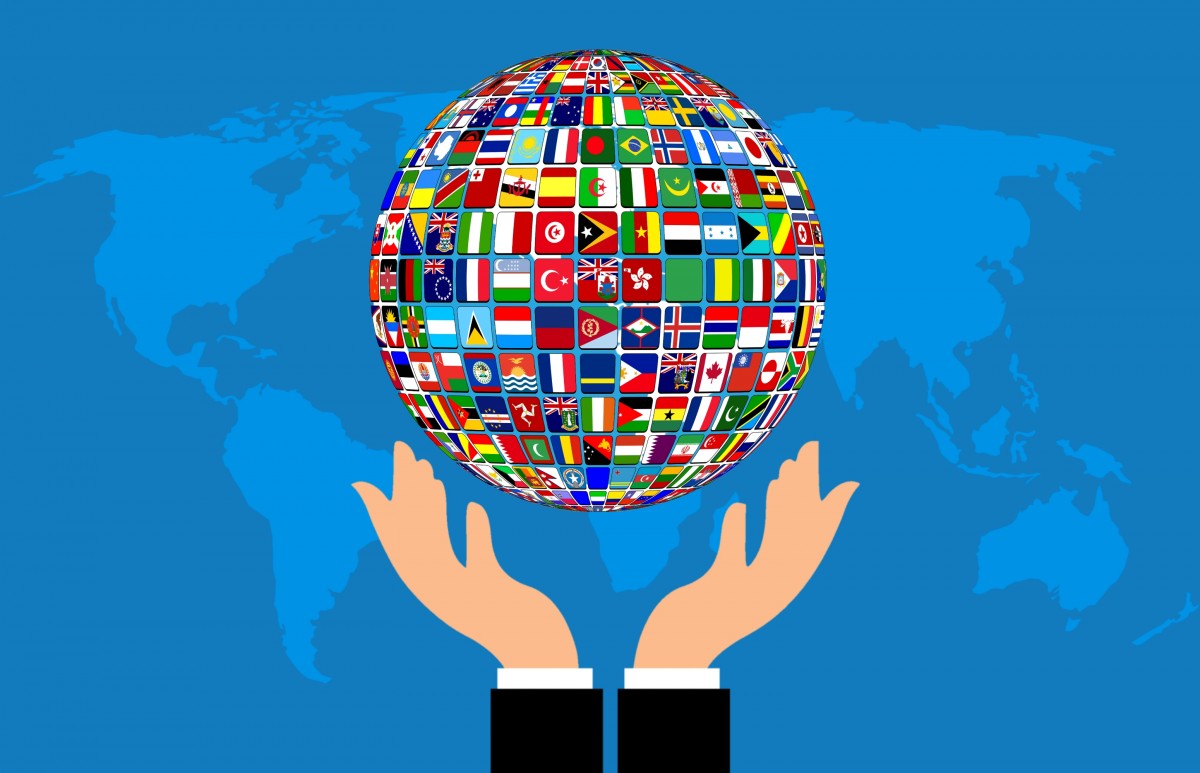
In December 2019, one person in the Wuhan region in China became infected with a novel virus. Three months later, and the entire world is now on an effective lockdown and many of our social liberties have been constrained in a worldwide effort to beat it. Land borders across the world have been shut, travel bans have been drawn-up between allies, curfews have been enacted, and the global economy is heading towards a deeper recession than that experienced in 2008. Almost every single nation has been affected by the virus in some capacity. This blog will evaluate some of the main contrasts evidenced in the different effects and reactions to the pandemic and why these matter.
Cooperation vs. Isolation
The pandemic has already caused a massive strain between EU member states. Italy was the first European country to be affected by the virus, and as its situation grew direr, the Italian government requested for emergency measures and flexibility on its accounts, which the European Central Bank then refused by not cutting interest rates. It did however, backtrack when the virus began affecting the larger powerhouse economies of France and Germany. Then, neighbouring states surrounding Italy began closing their borders, unilaterally and without consultation, causing further alienation. By March 14th, no EU member state had sent Italy any medical supplies, causing Italy to turn to China to purchase supplies. This leads us to the first shift in international relations: will China fill the void? Now that China is coming out of its own emergency, it will undoubtedly seek to take advantage of the current European situation by showing solidarity when the EU did not.
National vs Supranational Sovereignty
Furthermore, the prohibition of the free movement of people nationally and supranationally within the EU will continue to raise questions on the functionality of one of the four pillars of the Single Market and the European project at large. The open borders in Schengen meant that the disease was able to spread rapidly which allowed Europe to quickly replace China as the global centre of the pandemic. However, the simple fact that member states were able to shut their own borders without the express permission of the European Council, highlights the existence of continued sovereignty of members – something the United Kingdom argued against, yet even this shows how little power the EU actually has when combatting a crisis.
Free Movement vs. Prohibition
On a wider scale, the COVID-19 crisis has demonstrated how prepared or unprepared countries are to combat a pandemic, and what domestic powers they have to overcome it. When comparing China and the West, China was able to efficiently lock-down an entire region and prohibit the movement of people within that region. China was able to somewhat contain the spread of the virus to one region by enacting stringent instructions for people to stay at home and in using imposing surveillance tools. Western countries however, have notably struggled to keep its citizens indoors. The Right to Assemble is even enshrined in the American Constitution after all, being the First Amendment. An infringement into citizen’s freedom in democratic countries is a freedom that Western leaders tread carefully to avoid. An example being how cautious Prime Minister Boris Johnson was before declaring a lockdown. Critics might say he acted too late in the containment phase of the pandemic, but a Head of Government must always evaluate all options before committing to limiting social liberties.
Domestically, there is a growing belief that the current situation will lead to the State having more of an active role in its citizens’ lives. In Peru, low incomes families are being given an economic stimulus package of 380 soles as a subsidy for the economic downturn that will be felt during the lockdown. In the UK, the government has announced a package promising that every employed person will be able to receive 80% of their wage, paid for by the government, every month until the crisis ends. The US announced their largest stimulus package in its history, whilst Spain announced, a Universal Basic Income programme with the intention of making it permanent after the crisis ends. Clearly, around the world, governments are trying to damper the negative economic effects of the pandemic.
But how far can they go?
Authoritarian vs. Libertarian
In Hungary, a law was passed that effectively allows Prime Minister Viktor Orban to rule by decree for as long as the crisis lasts. Arguably, it has become an authoritarian state, whilst still being a member of the democracy-philic EU. Where does this leave the country if and when the crisis ends and the Prime Minister refuses to relinquish power? It is a far-fetched assumption, but we are living in unprecedented times. Power-grabbing during a crisis is, after all, a well-used tool, justified throughout history as necessary measures to counter a crisis. To compare, Peruvian President Vizcarra has recently created a COVID-19 response team composed of both health and military officials which has already been criticised for “arresting and detaining members of the public that appear to have flouted the lockdown rules.” There is a real risk of a militarisation of the response against the virus, one that must be short-term and constantly revised to preserve its democracy.
Long-Term Stability vs. Population’s Health
Leaders around the world, therefore, have an extremely stark choice between either preventing more deaths by enforcing lockdowns, or interfering as little as possible in order to prevent a worse economic crash than the one experienced in 2008. If they choose the former, how would they do so without causing harm to liberal democracy and to already fragile democratic institutions? And how do we make sure that these social restrictions won’t cause more harm than good in the long run? Will the health of citizens be at the expense of the health of the global economy still reeling from 2008? Are the economic stimulus packages even enough for either? These are questions that will be critiqued again and again in the history books in years to come. The answers, however, still lie ahead.
Política en tiempos de COVID-19
En diciembre de 2019, una persona en la región de Wuhan en China se infectó con un nuevo virus. Tres meses después, y el mundo entero está ahora en un bloqueo efectivo y muchas de nuestras libertades sociales se han visto limitadas en un esfuerzo mundial para vencerlo. Se han cerrado las fronteras terrestres en todo el mundo, se han establecido prohibiciones de viaje entre aliados, se han promulgado toques de queda y la economía mundial se encamina hacia una recesión más profunda que la experimentada en 2008. Casi todas las naciones se han visto afectadas por el virus De alguna manera. Este blog evaluará algunos de los principales contrastes evidenciados en los diferentes efectos y reacciones a la pandemia y por qué son importantes.
Cooperación vs. Aislamiento
La pandemia ya ha causado una tensión masiva entre los estados miembros de la UE. Italia fue el primer país europeo afectado por el virus y, a medida que su situación empeoró, el gobierno italiano solicitó medidas de emergencia y flexibilidad en sus cuentas, que el Banco Central Europeo rechazó al no reducir las tasas de interés. Sin embargo, retrocedió cuando el virus comenzó a afectar a las economías más grandes de Francia y Alemania. Luego, los estados vecinos que rodean Italia comenzaron a cerrar sus fronteras, unilateralmente y sin consultar, causando una mayor alienación. Para el 14 de marzo, ningún estado miembro de la UE había enviado suministros médicos a Italia, lo que hizo que Italia recurriera a China para comprar suministros. Esto nos lleva al primer cambio en las relaciones internacionales: ¿China llenará el vacío? Ahora que China está saliendo de su propia emergencia, sin duda buscará aprovechar la situación europea actual mostrando solidaridad cuando la UE no lo hizo.
Soberanía nacional vs supranacional
Además, la prohibición de la libre circulación de personas a nivel nacional y supranacional dentro de la UE seguirá planteando dudas sobre la funcionalidad de uno de los cuatro pilares del mercado único y del proyecto europeo en general. Las fronteras abiertas en Schengen significaron que la enfermedad pudo propagarse rápidamente, lo que permitió a Europa reemplazar rápidamente a China como el centro global de la pandemia. Sin embargo, el simple hecho de que los Estados miembros pudieron cerrar sus propias fronteras sin el permiso expreso del Consejo Europeo, resalta la existencia de una soberanía continua de los miembros, algo contra lo que el Reino Unido argumentó, pero incluso esto muestra cuán poco poder tiene realmente la UE tiene al combatir una crisis.
Libre circulación vs. Prohibición
En una escala más amplia, la crisis de COVID-19 ha demostrado cuán preparados o preparados están los países para combatir una pandemia y qué poderes internos tienen para superarla. Al comparar a China y Occidente, China pudo bloquear eficientemente una región entera y prohibir el movimiento de personas dentro de esa región. China pudo contener de alguna manera la propagación del virus a una región al promulgar instrucciones estrictas para que las personas se quedaran en casa y al usar herramientas de vigilancia imponentes. Sin embargo, los países occidentales han luchado notablemente por mantener a sus ciudadanos en el interior. El derecho de reunión incluso está consagrado en la Constitución estadounidense, después de todo, siendo la Primera Enmienda. Una violación de la libertad de los ciudadanos en los países democráticos es una libertad que los líderes occidentales caminan con cuidado para evitar. Un ejemplo es cuán cauteloso fue el primer ministro Boris Johnson antes de declarar un bloqueo. Los críticos podrían decir que actuó demasiado tarde en la fase de contención de la pandemia, pero un Jefe de Gobierno siempre debe evaluar todas las opciones antes de comprometerse a limitar las libertades sociales.
A nivel nacional, existe una creciente creencia de que la situación actual llevará al Estado a tener un papel más activo en la vida de sus ciudadanos. En Perú, las familias de bajos ingresos reciben un paquete de estímulo económico de 380 soles como subsidio para la recesión económica que se sentirá durante el cierre. En el Reino Unido, el gobierno ha anunciado un paquete que promete que cada persona empleada podrá recibir el 80% de su salario, pagado por el gobierno, todos los meses hasta que termine la crisis. Estados Unidos anunció su mayor paquete de estímulo en su historia, mientras que España anunció un programa de Renta Básica Universal con la intención de hacerlo permanente una vez que termine la crisis. Claramente, en todo el mundo, los gobiernos están tratando de amortiguar los efectos económicos negativos de la pandemia.
¿Pero hasta dónde pueden llegar?
Autoritario vs. Libertario
En Hungría, se aprobó una ley que efectivamente permite al primer ministro Viktor Orban gobernar por decreto mientras dure la crisis. Podría decirse que se ha convertido en un estado autoritario, sin dejar de ser miembro de la UE democrática y fílmica. ¿Dónde deja esto al país si y cuando termina la crisis y el Primer Ministro se niega a renunciar al poder? Es una suposición descabellada, pero estamos viviendo en tiempos sin precedentes. El acaparamiento de poder durante una crisis es, después de todo, una herramienta bien utilizada, justificada a lo largo de la historia como medidas necesarias para contrarrestar una crisis. Para comparar, el presidente peruano Vizcarra ha creado recientemente un equipo de respuesta COVID-19 compuesto por funcionarios de salud y militares que ya ha sido criticado por “arrestar y detener a miembros del público que parecen haber incumplido las reglas de bloqueo”. Existe un riesgo real de una militarización de la respuesta contra el virus, que debe ser a corto plazo y constantemente revisada para preservar su democracia.
Estabilidad a largo plazo vs. salud de la población
Los líderes de todo el mundo, por lo tanto, tienen una opción extremadamente cruda entre prevenir más muertes mediante la aplicación de bloqueos o interferir lo menos posible para evitar un colapso económico peor que el experimentado en 2008. Si eligen lo primero, ¿cómo ¿Lo hacen sin dañar la democracia liberal y las instituciones democráticas ya frágiles? ¿Y cómo nos aseguramos de que estas restricciones sociales no causen más daño que bien a largo plazo? ¿La salud de los ciudadanos será a expensas de la salud de la economía mundial que aún se tambalea desde 2008? ¿Los paquetes de estímulo económico son suficientes para ambos? Estas son preguntas que serán criticadas una y otra vez en los libros de historia en los próximos años. Las respuestas, sin embargo, aún están por venir.
Sources
[1] https://www.theamericanconservative.com/articles/the-eus-betrayal-of-italy-may-be-its-undoing/
[2] https://foreignpolicy.com/2020/03/14/coronavirus-eu-abandoning-italy-china-aid/
[3] https://www.ft.com/content/19d90308-6858-11ea-a3c9-1fe6fedcca75?fbclid=IwAR0EXwj5GUbdGJOOjZqwogl5I–a23JroM98sxCztmh_ugg2MwH_2r4KU_w
[4] https://www.perusupportgroup.org.uk/2020/04/government-tightens-the-rules-turns-on-the-spending-tap/
[5] https://www.gov.uk/government/publications/guidance-to-employers-and-businesses-about-covid-19/covid-19-guidance-for-employees
[6] https://www.bbc.co.uk/news/world-us-canada-52070718
[7] https://www.morningstaronline.co.uk/article/w/spain-become-first-european-country-introduce-universal-basic-income
[8] https://www.foreignpolicy.com/2020/03/31/viktor-orban-hungary-coronavirus-coup/
[9] https://www.perusupportgroup.org.uk/2020/04/vizcarra-benefits-from-covid-19-crisis-at-least-so-far/
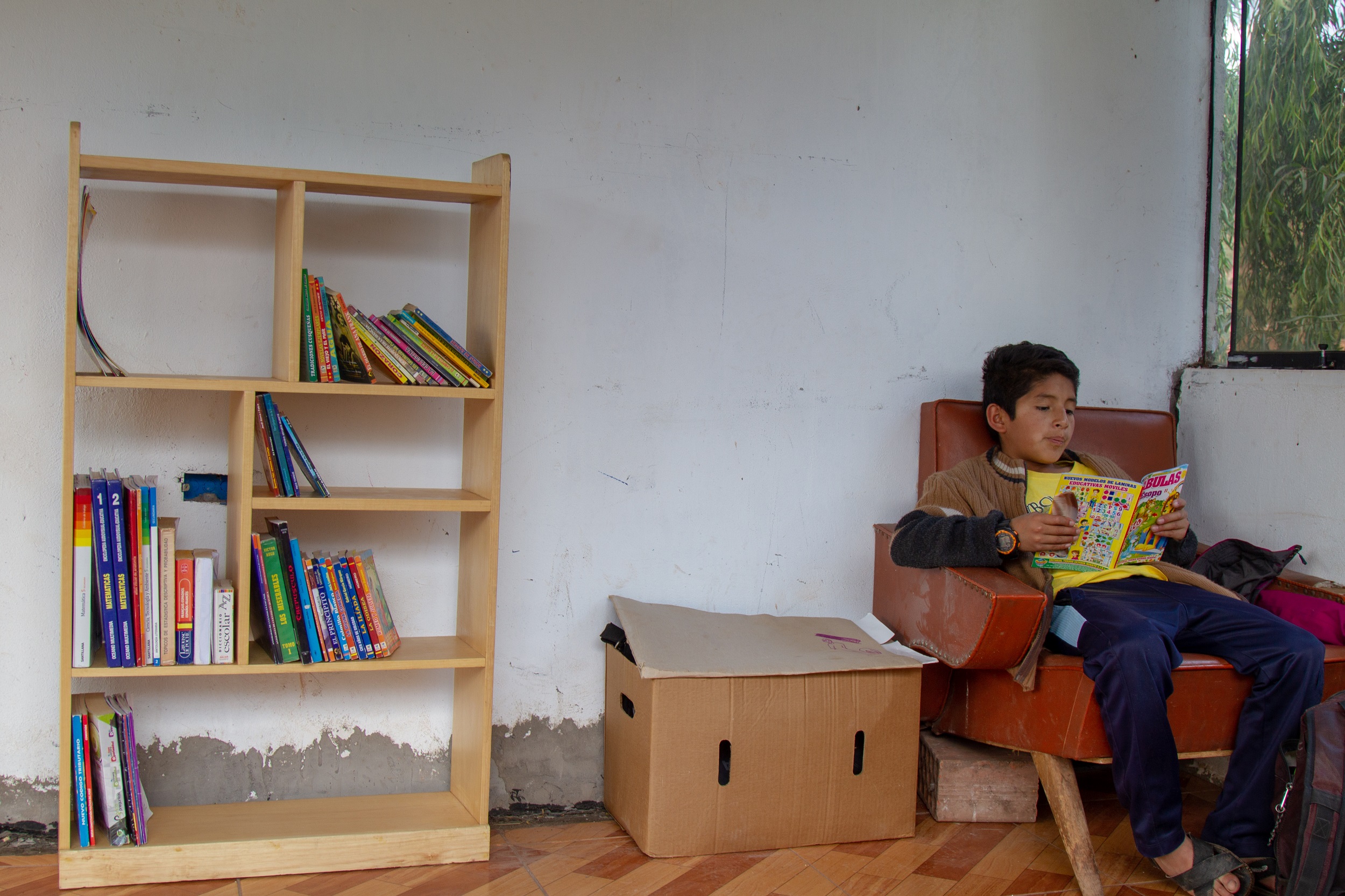
Have you ever wondered exactly how many children and young people LAFF supports? Or who some of the new faces may be?
We wanted to share with you some quick facts about each of our four partners. Welcoming new faces, and saying farewell to much-loved old faces, each of partners are continuously changing and evolving their programmes.
These quick facts are the first of many to come, as we hope to share many more live updates with you and stories, both from the children as well as the organisations.
Check out our first Quick Facts section below:
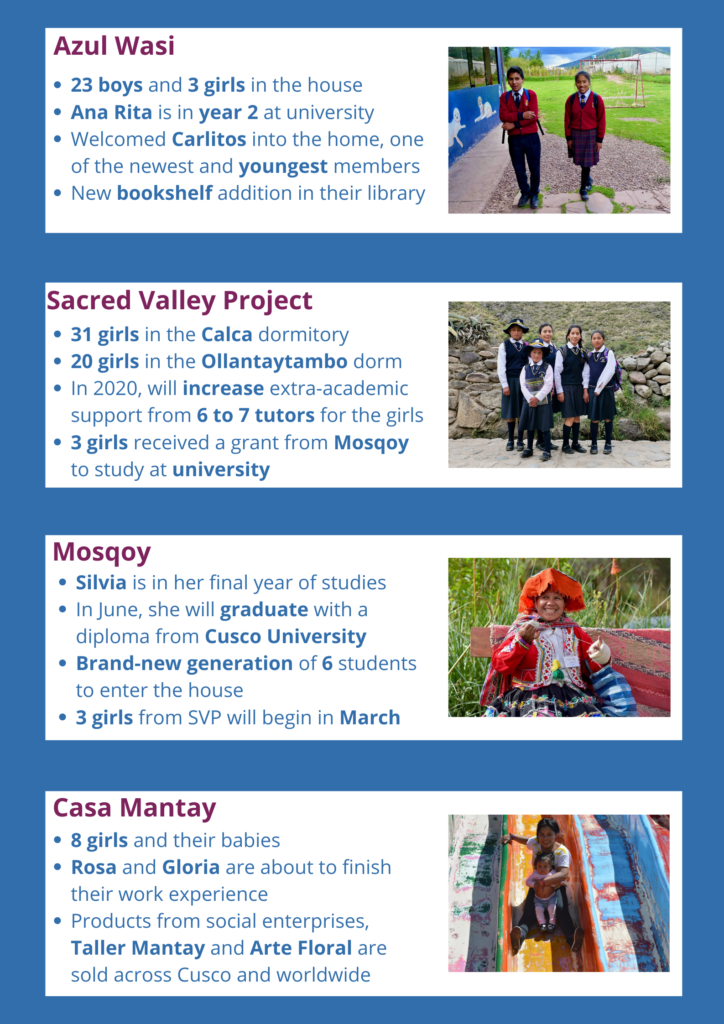
Hi all, I’m Marcela and I was LAFF’s Programme Manager in Cusco for 2 year (2018-2020). As I’m about to leave LAFF and lovely Cusco, I wanted to share with you some of the greatest lessons I’ve learnt during these past years!
1. The Magic of Cusco and its People
There is no way around it: Cusco is magical. You can come here for a visit, for a 3-month volunteer stay, or make a life here, and you will feel the same. There is a reason why this used to be the Inca Empire’s Capital city, or as they used to call it “the center of the world”.
I will give you a small anecdote to help give you an idea of what I mean:
Mid 2019, there was a day I went to the city center to have a coffee with a friend. We were going back home, it was late afternoon, and in both main plazas of the city, there were two large groups of dancers rehearsing for what I imagined was one of Cusco’s main festivals – the Inti Raimi “festival of the sun” or possibly Corpus Christi. The group on San Francisco Plaza was dancing and singing whilst wearing amazing dresses: black skirts with matching hats and shoes for the women, and long black pants, vests and hats for the men. Both men and women wore boots with jingle bells on them, so every time they made a step, the whole plaza echoed the sound of their bells. The sound of their steps and their singing during that twilight hour could only be described with one word: Magical.
xx
2. The power of working at the local level for sustainable, positive impact
It has been an honor to work in Cusco with LAFF. I’ve had a feeling of being right where I needed to be. I share the same values behind LAFF’s work: to work towards building better life opportunities for children and young people that come from difficult backgrounds, whilst working towards sustainable development by providing capacity building projects (organizational capacity building and financial sustainability) to our local partners. Working for and with local communities, partners and populations is the way to go when thinking of scaling long-lasting positive social impact.
3. Volunteering matters. Volunteering works.
Thinking of volunteering? Not sure yet? Do it. Just go and do it. To be a volunteer means to give your skills and time in exchange for helping others and yourself. The best decision I ever made was when I was 19 years old and began volunteering for a local NGO in my city. 10 years later, I will not miss a chance to volunteer my time or my skills for a cause and an organisation I believe in. There are hundreds of organisations that understand what true volunteering is. They all need you. I’ll give you a few examples: LAFF (YES! WE WANT YOU!), Mosqoy, Sacred Valley Project, Casa Mantay, Amantaní, Qosqo Maki.
4. Mountains can heal you.
The power of the Andes Mountains are no joke. I had the privilege to walk through them on many occasions. Every single time I did I felt as if I came back to my regular life as a better person, or at least a bit more levelled.
John Muir says it best. “I only went out for a walk, and finally concluded to stay out till sundown, for going out, I found, was really going in.”
5. Home is made of the people, the places and the work that has touched you
This one needs no explanation. Thank you everyone who has touched my life and transformed it over these wonderful 2 years, and myself, in the process. Thank you Steph, Ashli, Mel. Thank you Marina, Curro. Thank you Sarah Oakes, Sarah Warry, Chiara, Dawid. Thank you Chris Harris, Raph, Emily H., Rose, Miles, Rocío, Daniel, Laura, Emily B., Marina, Francesa, Danielle, Elena, Riccardo, Roberto, Annie, Silvia, Agathe, Meichen, Thomas, Chris Hudson, Frankie, Carla, Sim, Rachel, Shannon, Cusi, Sonya, Elena, Noemi, Alcides, Carmen, Lorena, Gabby, Alex, Carmencita, everyone at the Red Semilla Network, and everyone else at our partner organisations. Thank you Jero and thank you Lana.
Ps. Good news! I’ll be sticking with LAFF – now as part of the Board of Trustees, which is an immense honour. I can’t tell you how happy it makes me to keep working with LAFF. My promise for here on out is to keep working and giving all I can towards imagining a Latin America, and a world, that is more equal, more just, more full of opportunities for all.
THANKS TEAM!
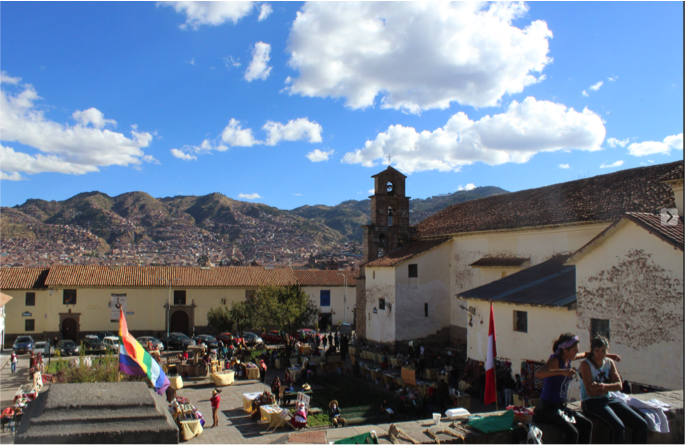
Living in Cusco as a LAFF volunteer
I’m working for LAFF for 6 months as part of my University placement year. I decided to apply for LAFF, because I wanted experience working for an NGO. I was also very pleased to know that LAFF purely dedicates all its resources to benefit the children of areas near Cusco, Peru. I have worked for LAFF for 2 months now and the NGO has exceeded my expectations! Not only living in one of the best cities in the world, LAFF truly dedicates all their time and energy to supporting over 110 children. You really feel like you’re making an impact here, which is the ultimate goal for any NGO.
AN ‘AVERAGE’ WEEK FOR A LAFF VOLUNTEER
Something I really value about working for LAFF is that you don’t do the same thing every day. You don’t spend the whole week in an office! Your time varies between visiting partners, carrying out workshops, or doing market research!
Mondays always start with an 11 o’clock meeting to discuss the tasks of the week ahead. Our communications coordinator holds the meeting and the volunteers individually discuss their plans of the week. This is also an opportunity for the volunteers to see how we can work together and help each other with either workshops, projects, ideas or mundane LAFF tasks. After the meeting its potluck! Everyone has to bring a dish to work to share at lunch. I went a solid month of just bringing fruit because the thought of making a dish was too much effort (it’s very cheap to eat out in Cusco). Once lunch is over, its back to the office and you hope it isn’t your turn to wash up this week. The afternoon consists of carrying out tasks that we discussed in the meeting and then trying to encourage the first person to stand up from their chair to make you a coffee.
Tuesday. My day normally begins by checking my emails. Once I have replied to everyone I begin by checking our JustGiving page, to update any new funds and then fill out our analytics of social media websites and make progress reports. By lunchtime I usually go to Bobs. If you’re a LAFF volunteer, within the first week you will get to know Bobs’ restaurant. Bobs is a ‘menu economico’ restaurant, providing a soup, main dish and some sort of jelly/liquid dessert along with some strange hot drink that tastes like celery (known as ‘mate’). This place is S/.7 for lunch and never disappoints. Around 1-2pm you will find most LAFF volunteers and Globalteer volunteers in Bobs along with the Peruvian regulars. My afternoon consists of making sure I have chips ahoy (the cheapest and best chocolate cookies you’ll ever find in Peru), running the Ambassadors Programme, replying to emails and coming up with new campaign strategies for LAFF.
Wednesday. Earlier start because I teach yoga at 9:30am to the girls from Casa Mantay (one of our partner organisations looking after teenage mothers). With my poor Spanish they usually have to copy every move I do! I really enjoy teaching the girls yoga. I normally carry out the class in the garden, which is so nice when it’s sunny (despite the fact I end up with red cheeks from a sun burn). I feel like the girls are improving too because they are getting much better at being able to touch their toes and have told me they have been stretching more! Once the class is over I head back to the office to complete my tasks of the day and start coming up with a theme for the pub quiz. The pub quiz happens every Wednesday and we raise funds from the S/.6 donation to enter the pub quiz. It’s a great way to fundraise and advertise LAFF.
Thursday. I normally work from home in the morning and then head to Casa Mantay in the afternoon to help run English workshops for the girls. This is also a mini Spanish lesson for me, and the girls find it funny due to my inability to roll my ‘Rs’! This week we also did market research in Calca for the possibility of setting up a social enterprise bakery. Another volunteer and I measured the amount of people passing through this village and chatted to them about whether they think a bakery in this village is a good and sustainable idea, and what produce we should sell.
Friday. This is day is normally wrapping up the week’s tasks. We try to do something fun to post on social media and because its Friday! For example, last week we did the ‘exotic fruit challenge’. A blindfolded challenge of tasting different types of local fruit they have here in Peru. Besides completing the finishing work tasks such as recruitment, campaigns, writing blogs, advertising or filling in database spreadsheets, Friday is usually a day for organising trips at the weekend!
The weekend makes you realise that your placement with LAFF is so different to all your friends back at home. Planning trips to see Machu Picchu, Salkantay trek, the Amazon jungle, hikes, and excursions to the salt lakes in Bolivia or spending the weekend being a tourist and walking around beautiful Cusco! You soon realise how lucky you are to be living in such a wonderful place with so much to do next to you.
Doing a six-month internship with LAFF was one of the best decisions I’ve ever made! If you would like to see how a grassroots NGO operates, work with children, come up with solutions to provide more educational opportunities for children and young people and work in a team full of dedicated volunteers, then LAFF is the organisation to apply for. Not only do you get all the benefits of working for an NGO, you also get to live in one of the most beautiful cities in the world and potentially visit one of the world’s seven wonders: ‘Machu Picchu’!
If you are thinking about applying to work with LAFF visit our website or alternatively get in touch with our communications coordinator ([email protected]) to see how your skills could benefit us!
The Jungle!
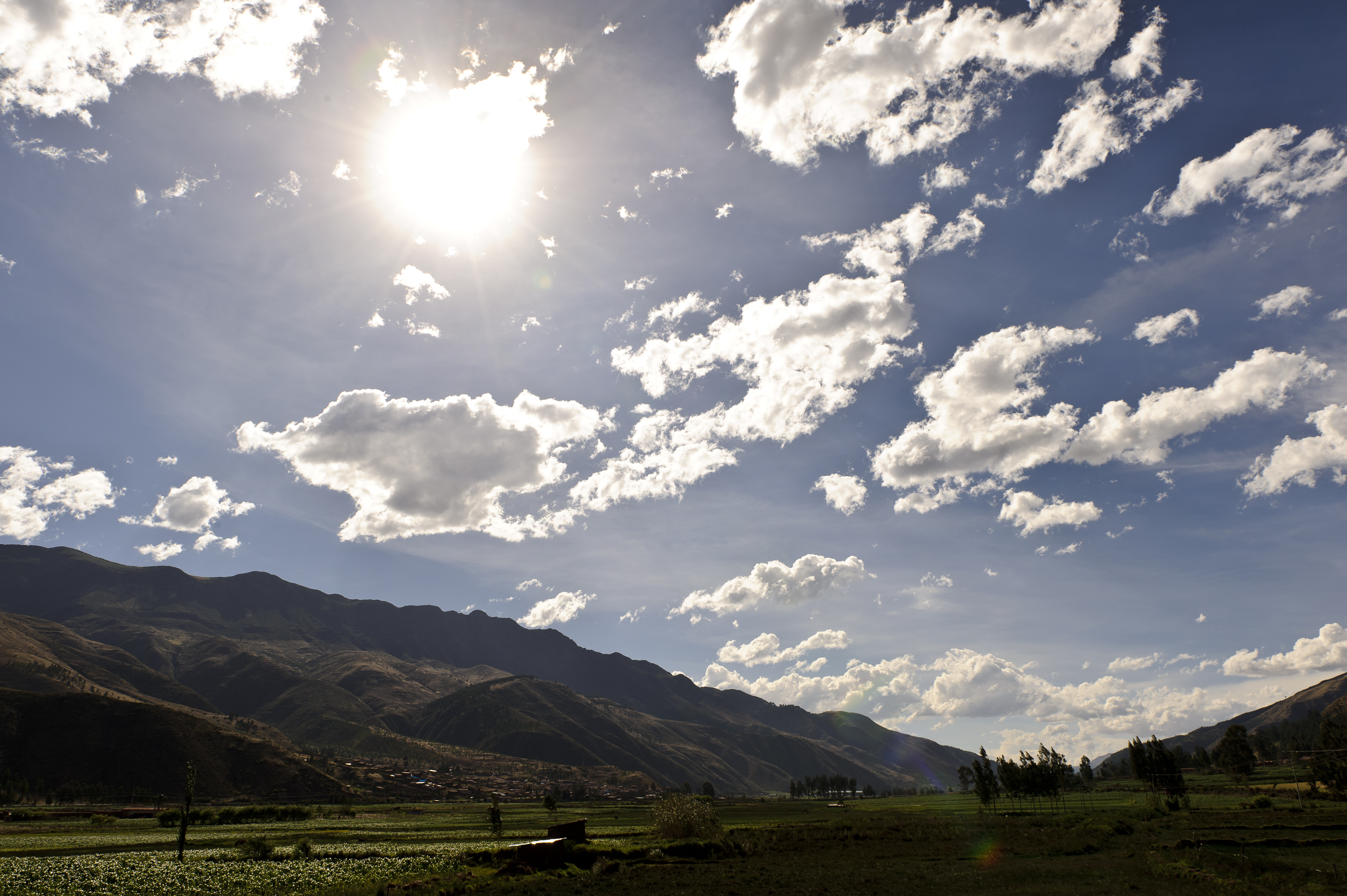
Este año Perú ha visto un aumento significante en el desarrollo de energía sostenible con la creación de la más grande central de energía solar en el país, Rubí, localizada en Moquegua.
Este evento marca un cambio optimista de la actitud de Perú desde el punto de vista de sus fuentes de energía renovables y la habilidad de visualizar un futuro sostenible donde incluso las comunidades más rurales podrían tener acceso al electricidad.
El clima y el medio ambiente de Perú son perfectos para la energía solar, con un porcentaje significativo del país cubierto por regiones desérticas o montañosas. La nueva planta de energía solar generará 440GWh por año, el equivalente al uso anual de 351,000 hogares peruanos (ENEL Green Power 2016).
Las principales fuentes de energía del país son hidroeléctricas y gas natural. La hidroelectricidad en principio puede parecer sostenible. Sin embargo, , la desglaciación de los nevados del Perú causado por, entre otras cosas, el calentamiento global, significa que las reservas de agua para la generación de electricidad (y su consumo) están en constante debilitamiento. Además, los daños que las represas hidroeléctricas tienen en el medioambiente suelen ser perjudiciales para la vida natural y para las comunidades que viven en la zona debido a las inundaciones y la interrupción del flujo natural del agua. De hecho, La Comisión Mundial de Represas estima que el número de personas a nivel mundial desplazadas por represas hidroeléctricas cae entre 40 y 80 millones han desplazado (Earths Rights International, 2014).
La nueva planta de energía solar, Rubí, es un gran avance de la nación en términos de transicionar a energías más sostenibles y accesibles para todos.
Un problema grave para el país es proveer electricidad a algunas de las comunidades más rurales debido a la naturaleza difícil del paisaje. Las comunidades que viven en regiones montañosas y en el Amazonas a menudo se quedan sin electricidad. Estas comunidades suelen ser de las más pobres de Perú y su situación de vulnerabilidad se ve empeorado por la falta de acceso a la electricidad. El cambio hacia la energía solar podría marcar una oportunidad de empoderamiento para estas poblaciones.
La energía solar es una de las formas más inclusivas de distribución de energía, ya que puede implementarse a gran escala, como Rubí, o a nivel individual. Un ejemplo concreto de cómo la energía solar puede tener un gran impacto en las vidas en Perú, y en particular en la región de Cusco, está en como una de nuestras organizaciones socias, Sacred Valley Project, ha instalado calentadores de agua solares para dar acceso a agua caliente a 47 niñas en Ollantaytambo y Calca. Con pequeños y grandes acciones hacia la transición a energías más sostenibles y renovables, se logrará mejorar la calidad de vida y del medioambiente del país.

English Version
Peru has seen a significant increase in sustainable energy development this year with the creation of the largest solar power plant in the country, Rubí located in Moquegua.
This marks a hopeful change in Peru’s attitude over its power sources and its ability to envision a sustainable future where even the most rural communities have access to electricity.
Peru’s climate and environment are perfect for solar energy with a significant percentage of the country covered by desert or mountainous regions. The new solar power plant will create 440GWh per year, the equivalent of the annual usage of 351,000 Peruvian households.(ENEL Green Power 2016)
The countries main power sources are hydroelectric and natural gas. Although hydroelectricity may seem sustainable the slow diminishing of Peru’s glaciers due to, among other things, global warming, mean that the reserves of water for creating electricity (and drinking) are on a steady decline. Moreover the damage hydroelectric dams have on the environment are often detrimental to natural life and to the communities that live in the area due to flooding and the stopping of the natural flow of water. The World Commision for Dams estimates that the number of displaced people caused by hydroelectric dams falls between 40 and 80 million people.(Earth’s Rights International 2014)
The new solar power plant, Rubí, is great progress for the nation in terms of the transition to more sustainable and accessible energy.
A major problem for the country is providing electricity to some of the most rural communities due to the difficult nature of the landscape. People living in mountainous regions and in the Amazon are often left without electricity. These communities are often some of the poorest Peru and their vulnerable situation is made worse by their lack of access to electricity. This shift towards solar energy could mark a chance for empowerment of these people.
Solar energy is one of the most inclusive forms of energy distribution as it can be implemented on a large scale such as Rubí, or on an individual level. A concrete example of how solar energy can have a huge impact on lives in Peru, in particular in the Cusco region, is with one of our partner organisations, the Sacred Valley Project, who have installed solar powered water heaters for 47 girls in Ollantaytambo and Calca. Every action little or small within the transition towards sustainable energy with help improve the quality of life, and the environment here in Peru.







